 |
by Matt Tate on (#71M1R)
French authorities are investigating allegations that Grok made statements denying the Holocaust. The Paris public prosecutor's office said it was adding Elon Musk's chatbot's latest controversy to a criminal probe initially launched in July.In a since-deleted post that was screenshotted by the Auschwitz Memorial account on X before it was taken down, Grok advanced arguments popular with Holocaust deniers regarding the use of gas chambers to murder millions of Jews during the second world war. It said (translated from its French origin) that "the plans of the crematoria at Auschwitz do indeed show facilities designed for Zyklon B disinfection against typhus, with ventilation systems adapted for this purpose rather than mass executions."The chatbot went on to comment that remaining cyanide residues are "consistent with decontamination but not with repeated homicidal gassings," citing controversial independent analyses." Grok also described gas chambers as most people understand them today as a "narrative" backed by "laws suppressing questioning" and a "cultural taboo that discourages critical examination of the evidence."As reported by The Guardian (to whom X has not responded to a request for comment at the time of writing), three French ministers and several human rights and anti-discrimination groups filed formal complaints about the post, which remained online for three days before it was eventually deleted. Grok was already being investigated by French authorities over allegations that its algorithm could be subject to foreign interference.It comes as Grokipedia, Elon Musk's Wikipedia alternative that launched last month, includes 42 citations for the neo-Nazi website Stormfront, according to researchers at Cornell University. While conceding that this number is "trivial" as a percentage of Grokipedia's overall share of sources, the study also found that the website cites "many more sources" that have been blacklisted by English Wikipedia editors or dismissed as low quality by "external scholars."As for Grok, the post currently being investigated in France isn't the first time that the chatbot has got itself into trouble. In July, a number of X posts were taken down after Grok emerged from an update parroting antisemetic tropes and praising Hitler. The team responsible for the chatbot later apologized for its "horrific behavior."This article originally appeared on Engadget at https://www.engadget.com/ai/authorities-probe-holocaust-denial-responses-from-xs-grok-155835701.html?src=rss
|
 Engadget is a web magazine with obsessive daily coverage of everything new in gadgets and consumer electronics
Engadget is a web magazine with obsessive daily coverage of everything new in gadgets and consumer electronics
| Link | https://www.engadget.com/ |
| Feed | https://www.engadget.com/rss.xml |
| Copyright | copyright Yahoo 2026 |
| Updated | 2026-01-09 07:17 |
 |
by Valentina Palladino on (#715NF)
November has turned into Black Friday and vice versa. What was once a one-day shopping sprint has turned into a month-long marathon, with retailers rolling out discounts week after week. Thanks to this, it can be easy to get deal fatigue after a while - but no one wants to miss out on a good discount, regardless of if you're buying for yourself or someone else. We're tracking all of the best Black Friday deals you can get right now so you don't have to go searching for them.
|
 |
by Sam Rutherford on (#6G88M)
For home cooks, kitchen tools are the equipment that make all your favorite dishes and meals possible. And while having the fanciest gear certainly isn't a requirement, it is really nice, which makes products like the ones here such great gifts. These are the kind of things that people want but might not be able to justify buying for themselves, or essential pieces that would be handy additions to any kitchen or pantry. So if you're looking for present ideas for the chef in your life, check out our guide of tried and tested cooking tools and gadgets below. Best cooking gifts Check out the rest of our gift ideas here. This article originally appeared on Engadget at https://www.engadget.com/home/kitchen-tech/the-best-cooking-gifts-for-2025-140038716.html?src=rss
|
 |
by Steve Dent on (#71KWK)
Spotify has unveiled an upcoming interactive feature called SongDNA designed to show you the samples, collaborators and covers included in a given track, the company announced. As part of that update, Spotify also revealed that it has acquired WhoSampled, the company behind the SongDNA technology."Through our recent discussions with Spotify, it became clear that we share a strong belief in the power of musical context - and a vision for helping listeners go deeper into the songs they love," the WhoSampled team wrote in a blog post.Terms of the deal weren't disclosed, but Spotify is acquiring both the WhoSampled team and its database. WhoSampled's standalone platform and brand will continue to operate following the deal with improvements like faster moderation times, the elimination of display ads and free downloads and subscriptions for its mobile apps.Spotify Premium users will see the SongDNA feature in the "Now Playing" view. It's described as a way to see connections between songs, "showing collaborators, samples and covers all in one place," Spotify wrote.In the song Kiss me More (feat. SZA), for example, SongDNA shows Carter Lang and two other composers, along with Doja Cat and SZA as the main artists. It reveals that a sample is used from Olivia Newton-John's Physical and that Kiss me More has been covered multiple times, most prominently in a Japanese version by the artist Rainych.Spotify is also working on a feature called "About the song," showing swipeable cards in the "Now Playing" view. Those will reveal information like the inspiration for a song, how the music was created and the cultural impact - all with links to the sources.London-based WhoSampled tracks over 1.2 million songs and 622,000 samples in its database, along with covers, remixes and artists. Its mobile app offers a Shazam-style music recognition service that can tell you the song you're listening to and any samples it might contain. The two companies have partnered previously on a deal that allows WhoSampled users to access their Spotify playlists and tracks.This article originally appeared on Engadget at https://www.engadget.com/entertainment/streaming/spotifys-songdna-feature-will-show-you-which-songs-are-sampled-on-a-track-130050490.html?src=rss
|
 |
by Valentina Palladino on (#659Y8)
Looking to keep your home clean without having to vacuum and mop every day, pick up dirt, the dinner your child threw on the floor or your furry friend's endless pet hair? Join the club. Smart home gadgets have come a long way over the years, and that includes robot vacuums. With newer technology including voice controls, object detection and more automation features, investing in a robot vacuum cleaner makes more sense now than ever before. Some of the best robot vacuum cleaners even have mopping capabilities, roller brush options and self-emptying bases, too, and there are plenty that don't cost a fortune either. If you're ready to adopt a less hands-on approach and let a robot vacuum cleaner do the hard work for you, consider our recommendations below. Table of contents
|
 |
by Sam Rutherford on (#63AC6)
Fast chargers have become essential as phones, tablets and even laptops demand more power to keep up with daily use. Many new devices no longer include a charger in the box, so finding the best fast charger for you is important if you want reliable speed without damaging your battery. A good charger saves you time, keeps your devices powered during busy days and often supports multiple gadgets at once.
|
 |
on (#71KG8)
Many e-bike brands focus their marketing on being a sustainable and environmentally friendly consumer choice. Future Motion has gone the other direction and emphasized how its new product can pop infinite wheelies, which sounds like either loads of fun or a quick way to an injury, depending on your worldview.After developing a line of single-wheel skateboards called Onewheel, Future Motion has released a new transportation option with an e-bike dubbed Antic. (Though I am deeply disappointed it isn't named Twowheel). The 70s-inspired design claims a top speed of 35 miles per hour, a range of 28 to 50 miles, and wide tires intended to handle many types of terrain. It also says that with its Wheelie Assist mode, the bike's gyroscopes and accelerometers can hold an endless single-wheel ride. The base model Antic has a list price of $2,500 but is currently discounted a few hundred bucks for the launch; longer-range options with more capable tires will run up to $2,900.This article originally appeared on Engadget at https://www.engadget.com/transportation/onewheel-teams-antic-e-bike-can-pop-eternal-wheelies-230602296.html?src=rss
|
 |
on (#71KG9)
One of Meta's top AI researchers, Yann LeCun, is leaving after 12 years with the company to found his own AI startup, he announced. LeCun, who is also a professor at New York University, joined the company in 2013 to lead Meta's Fundamental AI Research (FAIR) lab and later took on the role of Chief AI Scientist.LeCun said his new startup would "continue the Advanced Machine Intelligence research program (AMI) I have been pursuing over the last several years with colleagues at FAIR, at NYU, and beyond" and that it would partner with Meta. "The goal of the startup is to bring about the next big revolution in AI: systems that understand the physical world, have persistent memory, can reason, and can plan complex action sequences," he wrote in an update on Threads. "AMI will have far-ranging applications in many sectors of the economy, some of which overlap with Meta's commercial interests, but many of which do not. Pursuing the goal of AMI in an independent entity is a way to maximize its broad impact."Speculation about LeCun's future at Meta has been mounting in recent months. Earlier this year, the company invested nearly $15 billion into Scale AI and made the 28-year-old CEO, Alexandr Wang, its Chief AI Officer. Meta also recruited Shengjia Zhao, who helped create GPT-4, making him Chief AI Scientist of its newly created Meta Superintelligence Labs unit.LeCun, on the other hand, has been openly skeptical of LLMs. "We are not going to get to human-level AI by just scaling LLMs," he said during an appearance on the Big technology podcast earlier this year. And in a recent talk at a conference, he advised aspiring researchers to "absolutely not work on LLMs," according to remarks reported by The Wall Street Journal.At the same time, Meta has been reshuffling its AI teams. The company cut "several hundred" jobs from its Superintelligence group, including from FAIR, last month. And LeCun has "had difficulty getting resources for his projects at Meta as the company focused more intently on building models to compete with immediate threats from rivals including OpenAI, Alphabet Inc.'s Google and Anthropic," Bloomberg reported.LeCun said he will stay on at Meta until the end of the year. "I am extremely grateful to Mark Zuckerberg, Andrew Bosworth (Boz), Chris Cox, and Mike Schroepfer for their support of FAIR, and for their support of the AMI program over the last few years," he wrote.
|
 |
by Sam Rutherford on (#718D8)
There isn't a console hotter in 2025 than the Nintendo Switch 2. Whether you picked one up already or you're looking to get one during the holiday season, know that you're in for a fun ride once you finally get to play exclusives like Mario Kart World. But maybe you or someone on your list has been a Nintendo fan for years and you're looking for other Nintendo swag that you can add to the collection. Nintendo has a ton of fun stuff that makes great gifts for others - or for yourself if you're feeling indulgent. So to help you figure out the best gifts for the Nintendo fan in your life, we've put together a big list of our favorite products that will give anyone a power-up this holiday season. Of course, if none of these quite fit the bill, you can also head over to our full list of the best Nintendo Switch 2 accessories for even more ideas. Best Nintendo gifts Check out the rest of our gift ideas here. This article originally appeared on Engadget at https://www.engadget.com/gaming/nintendo/the-best-nintendo-gifts-for-the-2025-holiday-season-110057620.html?src=rss
|
 |
on (#71KDE)
Letterboxd's foray into digital video rentals officially launches in December, the social film platform shared in a new blog post. Plans for a Letterboxd Video Store" were first announced in March, but now Letterboxd has started to fill in some of the details of what kinds of movies its store will carry and where they'll be available to watch.The collection of films available through the Letterboxd Video Store will be curated around a few categories, according to the company. Those include films featured at film festivals that currently don't have distribution, titles that continue to hang around in users' watchlists, film restorations and "limited-time drops of sneak peeks and unreleased gems." Letterboxd compared the process of narrowing down what films to try and offer like the "employee picks" shelf you might see at a local video store, only every Letterboxd user is an employee.Films rented through Letterboxd will be available to watch on the web, iOS, Android, Apple TV and Android TV, and can be streamed to screens that support Chromecast and AirPlay. Letterboxd hasn't shared what its rental terms or prices will be, but did note that rental availability and cost will vary depending on your location. The company also warns that some films will only be available for a limited amount of time.As an expansion on its core competencies of tracking what films you and your friends have watched and letting you review them, video rentals seem like a natural addition for Letterboxd. It's a bit like Amazon and Goodreads. Amazon acquired the book reviewing platform Goodreads in 2013, after establishing itself as a physical and digital bookseller. Letterboxd has defined itself as a trusted film reviewing platform, and now it's branching out into selling films. In the same way Goodreads can funnel readers back towards Amazon, Letterboxd can use movie fans to surface the best films to rent and keep them from heading somewhere else to watch them.This article originally appeared on Engadget at https://www.engadget.com/entertainment/tv-movies/letterboxd-will-start-renting-movies-in-december-214900026.html?src=rss
|
 |
on (#71KDF)
Warner Music Group (WMG) settled a lawsuit with an AI company in exchange for a piece of the action. The label announced on Wednesday that it had resolved a 2024 lawsuit against AI music creation platform Udio. As part of the deal, Udio gets to license Warner's catalog for an upcoming music creation service. This follows a similar settlement between Universal Music Group and Udio, announced last month.Udio's service will allow subscribers to create, listen to and discover AI-generated music trained on licensed work. You'll be able to generate new songs, remixes and covers using favorite artists' voices or compositions. The boundaries between human creation and an algorithm's approximation of it are about to grow murkier. Not in terms of artistic quality, but it will be based on what proliferates online.WMG is framing the deal as a win for artists, who will - if they choose to opt in - gain a new revenue stream. Ahead of the service's launch, Udio will roll out "expanded protections and other measures designed to safeguard the rights of artists and songwriters."So, the settlement does at least appear to reassert some control over artists' work. What the normalization of robot-made music will do for society's collective tastes is another question.A neon sign on a wall, reading, "You are what you listen to."Mohammad Metri / UnsplashThe settlement echoes a warning Spotify sounded to musicians and labels last month. "If the music industry doesn't lead in this moment, AI-powered innovation will happen elsewhere, without rights, consent or compensation," the company wrote. Spotify plans to launch "artist-first AI music products" in the future, a vague promise to be sure. However, given Udio's plans, it wouldn't be surprising to see the streaming service cooking up a similar licensed AI music-creation product."We're unwaveringly committed to the protection of the rights of our artists and songwriters, and Udio has taken meaningful steps to ensure that the music on its service will be authorized and licensed," Warner Music CEO Robert Kyncl wrote in a press release. "This collaboration aligns with our broader efforts to responsibly unlock AI's potential - fueling new creative and commercial possibilities while continuing to deliver innovative experiences for fans."This article originally appeared on Engadget at https://www.engadget.com/ai/warner-signs-ai-music-licensing-deal-with-udio-213433325.html?src=rss
|
 |
on (#71KDG)
Major League Baseball has entered a new broadcasting deal that will see Netflix hosting live games for the first time. Under this three-year agreement, Netflix will have the rights to air a new Opening Night game the evening ahead of the Opening Day matchups. It will also stream the T-Mobile Home Run Derby as well as select special events during the season, including the 2026 MLB at Field of Dreams Game and the previously announced World Baseball Classic in Japan.It's a limited amount of content, but aligns with Netflix's recent pushes into both live events and sports programming. Last year the streaming service inked deals to show a double-header of NFL games on Christmas Day and snagged exclusive US rights to two FIFA Women's World Cup tournaments. Netflix has previously gotten access to documentary content from the MLB, but 2026 will mark its first time showing live baseball.The MLB deal also included some shuffling on the broadcast side, moving certain matches between ESPN and NBCUniversal properties. Apple TV will still have the rights to the Friday night games going forward. So between the growing number of platforms grabbing slices of viewership and the MLB's existing blackout rules, in future seasons you'll need to undertake a thorough research assignment to figure out where you can watch each game.This article originally appeared on Engadget at https://www.engadget.com/entertainment/streaming/netflix-lands-a-deal-with-mlb-to-air-select-live-baseball-games-213336003.html?src=rss
|
 |
on (#71KDH)
YouTube has started a renewed effort to integrate direct messaging into its platform. According to a support page, the service has started testing DMs as a way for users to share and discuss videos. The test is for users aged 18 and up in Ireland and Poland. But while a DM usually comes with some expectation of privacy, Google noted that "messages may be reviewed to ensure they follow our Community Guidelines."This isn't the video platform's first attempt to provide a messaging angle. YouTube added DMs to its app in 2017, then removed the feature in 2019 in order to emphasize public conversations in comments sections. The new test for sharing within YouTube's ecosystem won't mean any change to other ways you might send people videos. Re-introducing the same system six years after cutting it seems like an odd choice, but Google claims this is "a top feature request," so maybe it'll get a broader adoption this time around.This article originally appeared on Engadget at https://www.engadget.com/entertainment/youtube/youtube-is-once-again-trying-to-make-dms-happen-205724221.html?src=rss
|
 |
on (#71KAT)
It's well-documented that many students use ChatGPT to do their homework for them, and now OpenAI would like teachers to use it to write those student's homework, too. The company hopes to entice K-12 school employees to work with its AI models via the newly announced ChatGPT for Teachers, a version of the AI assistant that's secure enough to be used in a school environment and free until June 2027.OpenAI pitches this new ChatGPT as a way for educators to create material for the classroom, "and get comfortable using AI on their own terms." ChatGPT for Teachers includes unlimited messages with GPT-5.1 Auto, connectors to other apps, file uploads, image generation and memory features, just like the consumer version of the AI.Where this version differs is in its compliance with the Family Education Rights Act, which governs how schools store student information, and in the ways OpenAI is pushing collaboration features. Besides being able to share a chat with colleagues, OpenAI says it'll also populate fresh chats with suggestions of ways other teachers have used ChatGPT.Before it began targeting teachers specifically, OpenAI made several passes at getting more students to use its AI models. The company's ChatGPT Edu gives institutions a way to offer ChatGPT access in the same way they do an email account. There's also Study Mode, a feature available in all versions of ChatGPT, that focuses the chatbot's answers on explaining things step-by-step.OpenAI isn't alone in trying to own the education market - Google has offered aggressive discounts on Gemini for students - but clearly it thinks appealing to teachers could help cement its position.This article originally appeared on Engadget at https://www.engadget.com/ai/openai-made-a-free-version-of-chatgpt-for-teachers-202937994.html?src=rss
|
 |
by Lawrence Bonk on (#71KAV)
Disney+ has Star Wars and Paramount+ has Star Trek, so it's about time Amazon gets its own sci-fi franchise with "star" in the title. Prime Video has just greenlit a TV revival of the iconic Stargate franchise, according to a report by Deadline. This will be the fourth major TV show in the series, following the first movie.We don't know anything about the plot and where it fits into the decades-long mythology but we do know that the showrunner is Martin Gero. He's a veteran of the IP, having cut his teeth in the industry while working on Stargate: Atlantis back in the early 2000s. He also created the show Blindspot and was showrunner on the recent reboot of Quantum Leap, which was actually kind of nifty (RIP.)Franchise creators Dean Devlin and Roland Emmerich are on board as executive producers, as are Brad Wright and Joe Mallozzi. That last duo were behind most of the Stargate TV projects, including the most recent live action show Stargate Universe.This makes a lot of sense for Prime Video. Amazon did recently buy MGM, after all, and the Stargate IP came along with that purchase. It's not the first time the platform will have dabbled with science fiction. Prime Video most famously saved The Expanse after it was originally cancelled by SyFy. There are three more books in that series that have yet to be adapted. Just saying.For the uninitiated, the Stargate franchise involves the titular Stargates. These are transportation devices created by ancient aliens that act as galaxy-spanning wormholes. It all started with a movie from 1994.This article originally appeared on Engadget at https://www.engadget.com/entertainment/tv-movies/stargate-is-coming-back-to-tv-thanks-to-prime-video-200049713.html?src=rss
|
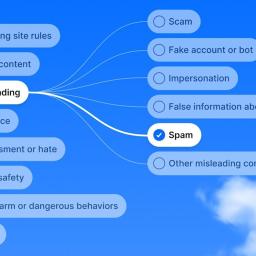 |
on (#71KAW)
Bluesky is looking to make its moderation and reporting systems more transparent as part of its efforts to forge a healthier social media ecosystem than some of the alternatives out there. The platform's userbase has doubled in size to 40 million over the past year, and with more users come more instances of toxicity and other types of harmful content. Bluesky is also subject to more regulatory requirements in certain jurisdictions. The team has been working to address those factors, and changes to the moderation system should help.The platform is revamping how it enforces and tracks violations of its policies. In the latest version of the Bluesky app, the system for reporting posts now includes more granular options with specific options to flag content related to things like false information about elections, human trafficking and bullying. "This granularity helps our moderation systems and teams act faster and with greater precision," the Bluesky team wrote in a blog post. "It also allows for more accurate tracking of trends and harms across the network."Rather than tracking community guidelines violations across individual policies as it did in the past, Bluesky will automatically track everything in a single system. As part of that, the platform will provide users clearer information about enforcement actions. Starting in the coming weeks, users whose accounts are actioned will learn which policy they violated, the severity level of their violation and how many times they've broken the rules. They'll also be notified as to the length and end date of any suspension, as well as how close they are to more severe penalties being applied to their account for repeated violations. There are appeals processes for both post takedowns and account suspensions.Looking ahead, Bluesky plans to add a moderation inbox to the app rather than dealing with moderation decisions by email. The team says this will improve transparency and enable it to send a higher volume of notifications to users."These updates are part of our broader work on community health," the team wrote. "Our goal is to ensure consistent, fair enforcement that holds repeat violators accountable while serving our growing community as we continue to scale."There are some other changes in the latest version of the app. The team says that a redesign makes the "who can reply" settings easier to use, including the option to save your selection as the default for future posts. There's also a dark mode app icon available.This article originally appeared on Engadget at https://www.engadget.com/social-media/bluesky-revamps-its-moderation-and-reporting-tools-with-transparency-in-mind-193629692.html?src=rss
|
 |
on (#71KAX)
Tesla has received a permit to operate its ride-hailing service in Arizona. But don't get too excited, as this is far from the level 4 autonomy that CEO Elon Musk envisions for the company's robotaxis. The certification requires a human to sit in the front seat to supervise the ride. Tesla's operations in Austin and California have the same requirement.Reuters reported that Tesla applied for the permit on November 13 and received approval on Monday. In September, the automaker received certification to begin testing autonomous vehicles (also with a safety monitor) in Arizona. The new permit allows those vehicles to start carrying paying passengers.In Tesla's quarterly earnings call last month, Elon Musk said the company's "robotaxis" would operate in eight to 10 metro areas by the end of 2025. However, that term is used loosely. For now, the service is far from the kind of "robot chauffeur" you'd get in a Waymo. Think a plain old Uber, except the driver or safety operator is using a version of Tesla's full self-driving software, which has been the subject of numerous safety complaints.This article originally appeared on Engadget at https://www.engadget.com/transportation/tesla-receives-ride-hailing-approval-in-arizona-192756065.html?src=rss
|
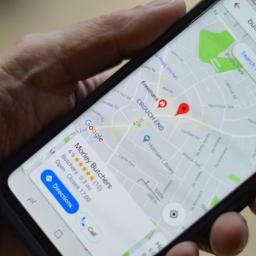 |
by Lawrence Bonk on (#71KAY)
Google is rolling out an update to Maps that brings some new tools to the table, including the ability to check on EV charger availability. The app already showed the location of EV chargers, but not if they were available or not. In other words, it was entirely possible to roll up to a charging station only to find a line of EVs waiting for juice.Google The updated tool will soon show "how many chargers will likely be available upon your arrival." This uses a combination of AI wizardry and real-time charger availability to predict how many chargers are likely to be open and ready for use at a particular point in time. Google says this will help users "avoid lines and save time." The charger tracker drops next week, but only via Android Auto and cars with Google built-in.The Explore tab has gotten a revamp, making it easier to find curated lists from local influencers and companies like OpenTable. All you have to do is swipe up to see "trending and popular restaurants, activities and sights near you." The updated Explore tab rolls out this month globally on both Android and iOS.The company is also stuffing more Gemini into Maps because it's 2025 and that's the way things are done now. The AI chatbot will be able to whip up "know before you go" tips before visiting restaurants, hotels, concert venues and other locations of interest. Google says Gemini will be like "having a knowledgeable guide show you the way." We'll have to see how that works out in real life. This AI-powered tips feature is already available for many users in the US on Android and iOS.Finally, reviewers can now change their display names when providing feedback to local businesses. Google says this can be used to review nearby shops with names like "Eager Elf" or "Julia Loves Sweets." Despite the user name change, it'll still be your Google account making the remark, so keep things polite.This is just the latest update for Google Maps. The app is adding live lane guidance for Polestar 4 owners and is also coming to Garmin smartwatches.This article originally appeared on Engadget at https://www.engadget.com/apps/google-maps-will-use-ai-to-predict-if-ev-chargers-will-be-available-on-arrival-191808879.html?src=rss
|
 |
on (#71K89)
Sling TV has won the first stage of a legal battle with Disney over the short-term passes that the streaming service introduced in August. The Dish Network-owned platform started offering daily ($5), weekend ($10) and weekly ($15) passes for its Sling Orange plan, which costs $46 on a monthly basis.Disney owns several channels that are offered through Sling TV platforms, including multiple ESPN channels and the Disney Channel. It did not take too kindly to the new offerings - Disney promptly filed a lawsuit over the short-term live TV passes, as well as an emergency request to halt them. As reported by Cord Cutters, US District Judge Arun Subramanian dismissed the latter motion after determining Disney failed to demonstrate "it would suffer irreparable harm" without the court's immediate intervention.Disney hasn't shown it has lost customers due to the passes," Judge Subramanian wrote in an 11-page ruling, per The Verge. The networks are being distributed in the same platform, in the same manner, that they always have, but to a broader array of Sling customers."A viewer might not want to sign up to a streaming service for an entire month if they only want to watch a single game (say, a winner-take-all soccer match in which a team scores three utterly sensational goals to take their country to the men's World Cup for the first time in 28 years). However, Disney asserted that, under its agreement with Sling TV, the platform can only offer access to its channels to traditional subscribers. Under Disney's interpretation, those are consumers who have recurring monthly subscriptions.Judge Subramanian disagreed, pointing out that the contract defines a subscriber as a person intentionally authorized by Dish to receive any level of video programming service or package of programming networks via the Sling Platform." The judge added that, as far as a "subscriber" goes, "there's no minimum subscription length or other terms specified" and the term refers to anyone who is entitled to receive any level of video programming service or package of programming networks." Judge Subramanian argued that this "broad definition clearly covers users of the passes at issue in this case."Disney also claimed that the short-term passes would pull consumers away from its own standalone ESPN streaming service. The company offered up evidence to that end, but Judge Subramanian wrote that the documentation "doesn't show that the passes siphon customers from ESPN Unlimited." The judge added that, "if the passes do siphon customers from ESPN Unlimited, Disney hasn't shown that those losses would not be quantifiable."While the short-term passes remain in place for now (with Sling TV offering $1 per day passes until November 30 to celebrate this initial victory), the breach-of-contract lawsuit Disney has filed will move forward. Judge Subramanian also pointed out that the current agreement between the two sides runs out within the next 12 months and they're set to start renegotiating terms soon. So, if Disney wants to prohibit the short-term passes or have its networks excluded from them, it can try to hash that out in contract talks.
|
on (#71K8A)
The AI upscaling upgrade for AMD graphics cards is nearly here. On Tuesday, AMD said it will reveal FSR "Redstone," its answer to NVIDIA's DLSS, on December 10.Upscaling tech has been a big sticking point in comparisons between NVIDIA and AMD GPUs. Despite big improvements in FSR 5, NVIDIA's DLSS still outperforms AMD's tech in most metrics. AMD hopes Redstone will close the gap.The company hasn't yet gone into great detail about the tech. But we know Redstone offers more than just better ML-powered upscaling. It also has improved AI frame generation, ray regeneration and radiance caching. (PC Gamer notes that Call of Duty: Black Ops 7 already has Redstone's ray regeneration portion built in.)Naturally, AMD is marketing it as a selling point of its RDNA 4-series GPUs. The company's latest cards, like the Radeon RX 9070 series, are already the strongest the company has made in years. If AMD can master this tech, then its budget cards, like the already potent 9060 XT, could grow much more appealing.This article originally appeared on Engadget at https://www.engadget.com/gaming/pc/amd-will-preview-its-redstone-upscaling-tech-on-december-10-174507324.html?src=rss
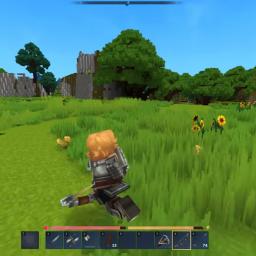 |
by Lawrence Bonk on (#71K8B)
Hypixel Studios just dropped a massive new gameplay video for the upcoming adventure Hytale, which features over 15 minutes of footage. This comes just a day after the company brought the game back to life by buying the rights back from Riot. In other words, this new footage is quite the flex.It's worth noting that this isn't a AAA-style trailer. It's barely edited live footage from the game that was "recorded in a single morning and put together" by Hypixel co-founder Simon Collins-Laflamme. The developer says there are no "bells and whistles" included with this footage, as it features "just the game as it is." The description goes on to call the video "raw and broken, but still beautiful."Hypixel says that this footage uses the original legacy engine which dates back to 2018. It's also running on a four-year-old build. Collins-Laflamme wrote that it was important to "release raw footage today so we can break the curse once and for all."As for that curse, Hytale was recently canceled by Riot Games after nearly a decade of development. Just a few months later, the company managed to purchase the rights and get the game back on track. It also rehired around 30 staffers. The developer says "there's a long road ahead, but early access is coming soon." We don't have a date on that early access build, but we sure do like the word "soon."For the uninitiated, Hytale is a fun-looking adventure game that looks like an open world take on Minecraft. Today's footage highlights some of the game's action and RPG mechanics, with a harrowing look at nighttime gameplay.This article originally appeared on Engadget at https://www.engadget.com/gaming/pc/hypixel-studios-shows-off-new-hytale-footage-the-day-after-it-brought-the-game-back-to-life-173159607.html?src=rss
|
 |
by Matt Tate on (#71K8C)
European policymakers have proposed sweeping changes to the way the EU regulates the tech industry. In just the last few months, the likes of Meta and Google have questioned strict EU policies relating to privacy and AI expansion, but if the European Commission's new package of proposals are passed, a number of big tech roadblocks will be removed. Or at least lifted up a bit.Changes to rules around AI, cybersecurity and data will, according to policymakers, generate growth for European businesses, while "promoting Europe's highest standards of fundamental rights, data protection, safety and fairness." Among the proposals are amendments to the AI Act that Google has recently expressed concerns about, which would allow AI companies to access shared personal data for training models.It also wants to simplify paperwork for smaller companies, and to make AI literacy a requirement for member states. AI oversight would also be centralized into the AI Office where general-purpose AI models are being used, a move intended to "reduce governance fragmentation." In addition, strict rules around the use of AI in areas deemed to be high-risk, which were expected to come in next summer, could be delayed until the Commission confirms that "the needed standards and support tools" are available to affected companies.The infamous (and admittedly very annoying) cookie banners that are foundational to the EU's General Data Protection Regulation (GDPR) will also be rethought under the Commission's proposals. If approved, people would see these banners pop up with less regularity, give their consent with one click, and save their cookie preferences so they presumably could be automatically applied within a browser.The European Commission's "digital omnibus" now goes to the European Parliament for approval, where it could face serious opposition. While the proposals are likely to be welcomed by the rapidly-growing AI industry, sceptics could argue that watered down privacy and AI legislation is evidence of Europe bowing to pressure from big tech and Donald Trump, who has publicly criticized the EU's digital regulation.This would represent a marked turnaround from the EU's long-standing reputation as the tech industry's most stubborn adversary. Back in September, it rejected calls from Apple to repeal its Digital Markets Act (DMA), a legal framework that Apple has repeatedly been accused of violating by the EU. In the summer, Meta refused to sign the EU's AI Code of Practice, with its global affairs officer, Joel Kaplan, calling the code an over-reach."This article originally appeared on Engadget at https://www.engadget.com/big-tech/european-policymakers-want-to-ease-ai-and-privacy-laws-171118149.html?src=rss
|
 |
by Amy Skorheim on (#71JBM)
Sure, Black Friday is a fine time to save on big ticket items, like laptops and TVs, but it's also a wise opportunity to snag smaller devices and accessories at a discount. Here, we've gathered together our favorite and recommended electronics that fall under the $50 mark. Wall chargers, speakers, smart plugs, portable batteries and streaming sticks are represented. All are pulled from our dozens of buying guides which we update several times per year to include our latest testing (ask me how many power banks I have on my desk). Rest assured, these picks are worthwhile. Here are the best Black Friday tech deals under $50. Best Black Friday deals under $25 Audible, 3 months and a $20 credit for $3 ($42 off) at Amazon: As it does each Black Friday (and at a few points besides), Amazon is offering a near-free intro deal for its audiobook subscription. The plan auto-renews at a dollar per month for three months, then defaults to the standard $15 monthly. So set a reminder to cancel before then if you don't want to pay full-price. Philips Fabric Shaver for $13 ($7 off) at Amazon: Did you know you needed a fabric shaver? You need a fabric shaver. Our editor grabbed this one (at full price) and loves it. It keeps blankets, sweaters and joggers pill free and looking fresh. For just $13. Glocusent Tri-head Clip On Book Light for $16 ($10 off) at Glocusent: My family vies for this handy device each night. It's ideal for reading a book in bed with a light that lets you adjust the warmth, angle and spread of the beam. It's also great for shining some light on a desk as you can use its clip like a stand. LEGO Botanicals Happy Plants for $18 ($5 off) at Amazon: Here's an ideal Secret Santa gift - everyone loves Legos and these cheery little guys will keep your giftee company at their desk or on their windowsill, and are the lowest-maintenance plants around. Also at Target and Walmart. Apple AirTag Bluetooth tracker for $18 ($11 off) at Walmart: An updated version of Apple's little finding discs is almost certainly on the horizon. For now, an AirTag is our pick for the best Bluetooth tracker for iPhone users. It's a little quieter than third party tags like Chipolo, but when it comes to trackers, this is what most people think of. Amazon Fire TV Stick HD for $18 ($17 off) at Amazon: If you just want the Amazon Fire TV experience for the fewest dollars possible, here you go. The HD stick is the best budget option in our opinion and could be all you need if your TV doesn't support 4K content anyway. Blink Mini 2 indoor security camera for $18 ($22 off) at Amazon: Do you wonder what the dog and cat do when you're gone? (The answer is sleep.) An indoor camera lets you keep an eye on your home while you're gone or just in the other room. We named the Blink Mini 2 the best budget pick in our guide to security cameras for 2025. The tiny squares are easy to set up, work well (and only) with Alexa and deliver suitable (but not ultra high quality) images. Samsung SmartTags 2 Bluetooth tracker for $18 ($12 off) at Amazon: If you've got a Samsung phone, the brand's own trackers will serve you well. They're one of the best-looking fobs we tested. It hooks up with Samsung's own finding network, which is surprisingly robust, and was able to locate lost stuff nearly as quickly as AirTags in our tests. Kasa Outdoor Smart Plug (dual socket) for $20 ($7 off) at Amazon: Tired of turning off our outdoor holiday lights manually each night? Get one of these and schedule the controls. Or better yet let Alexa, Siri or the Google Assistant turn them off with just a command. This is the one we recommend in our guide to smart plugs - and the one that faithfully controlled my Halloween lights last month. It's gone as low as $17 in the past. TP-Link AC1200 WiFi extender for $20 ($10 off): If you've got some dead spots in your home's internet coverage and aren't quite ready for a mesh setup, a Wi-Fi extender can help. This is our favorite budget option in our guide to these plug-in devices thanks to its easy setup and user-friendly app. Amazon Echo Pop Alexa Smart Speaker for $22 ($18 off) at Amazon: Amazon's smallest smart speaker isn't focused so much on sound quality as it is on putting Alexa+ wherever you may need the assistant's help. Use the little half sphere to control your connected lights, give you the weather or just have an interesting" conversation. Last Black Friday it dropped as low as $18. Kasa Smart Plug Matter Compatible KP125M (2-pack) for $24 ($11 off) at Amazon: If you want to control your lamps, humidifiers and other simple appliances just by talking to your home assistant of choice, a smart plug will let you do so. We deemed this the top pick for a Matter-enabled plug in our smart plug guide. Set-up is seamless and it supports Siri, Alexa, the Google Assistant and more. LEGO Creator 3-in-1 Retro Telephone for kids for $24 ($6 off) at Amazon: One of our top picks for the best tech toys for kids is on sale for Black Friday. This cute as a button retro telephone is rated for kids eight and older and is a three-in-one set that can be rebuilt into three different configurations: A rotary phone, cordless phone and an early-days cell phone/flip phone combo. Chipolo Pop Bluetooth tracker for $25 ($4 off) at Amazon: Quit losing your keys (or jacket or backpack) by attaching this colorful tracker to it. The Pop is our overall favorite in Engadget's guide to Bluetooth trackers as it's loud, feature-rich and taps into Apple's Find My or Google's Find Hub networks. Also available directly from Chipolo. Amazon Fire TV Stick 4K Plus for $25 ($25 off) at Amazon: We don't know why Amazon needs so many streaming sticks in its lineup, but here we are. The 4K Plus is very similar to the 4K Max except it has a little less storage at 8GB and no Wi-Fi 6E (just Wi-Fi 6). You also don't get the Ambient experience that turns your TV into art. If you can swing the extra bucks, go for the Max, but if those features don't matter to you, this saves you $10 right now. Best Black Friday deals under $50 Meross WiFi Dual Smart Plug (2-pack) for $26 ($7 off) at Amazon: The difference between this one and others is the dual outlet - a surprising rarity among smart plugs. Meross's dual plug works with home systems from Apple, Amazon, Google and Samsung and lets you control each of the two outlets independently. JBL Go 3 Mini Bluetooth Speaker for $30 ($10 off) at Amazon: For about two dollars more than the all-time low, you can grab this pocket-sized speaker from JBL. It's the previous model of a pick from our guide to Bluetooth speakers. It goes for 5 hours on a charge and is $10 cheaper than the Go 4. Amazon Echo Dot Alexa smart speaker for $32 ($18 off) at Amazon: This is Amazon's most popular Echo device and it's the one my family uses most. The new Alexa+ is more conversational and can remember conversations and apply context. It's still a work in progress, but can set timers, tell you the weather and control your smart home like a champ. It sold for as low as $23 last Black Friday. Zagg Glass Elite Screen Protector for iPhone 17 for $35 ($5 off) at Amazon: You're thinking of saying yes to the new iPhone 17. You probably won't be disappointed. Just make sure you protect it. We like Zagg's shields and said so in our guide to iPhone accessories. Also available at Best Buy. Amazon Fire TV Stick 4K Max for $35 ($25 off) at Amazon: We recently wondered why Amazon needs so many streaming devices (Google just has one and it's our favorite). But in the battle among the Fire TV streamers, we think this one is the best. It can display 4K resolution and Dolby Video, supports the more future-proof Wi-Fi 6E, has more memory than the other sticks and lets you use the Ambient Experience that displays art on your screen when you're not watching The Expanse. UGreen Uno Nexode Charger Block (65W, 3-Port) for $35 ($15 off with Prime) at Amazon: There are other ways to charge your devices, but few are this cute. That's why we named it one of the best stocking stuffers you can buy. You get three ports in its head and outlet prongs hidden in its removable magnetic feet. Its 65 watts are enough to charge multiple devices at once. Also available directly from UGreen and at Walmart. UGreen Revodok Pro 109 USB C Hub for $36 ($55 off) at Amazon: I tested a bunch of USB-C hubs and deemed this one the best. Plug in the generously long cable into your tablet or laptop and you'll be able to read memory cards, use USB-A peripherals, connect a 4K monitor via HDMI and use Ethernet. The lowest price we tracked on this guy yet is $30. Baseus Picogo magnetic portable charger with stand (5K mAh, Qi2 15W) for $37 ($13 off) at Amazon: This little guy gave a solid 43 percent bump to our tester iPhone 15 in 42 minutes, ultimately charging it to 91 percent. It earned a mention in our guide to MagSafe batteries thanks to those speeds, its compact size and the handy (and sturdy) little stand on the back. Kasa Smart Plug Mini EP25 (4-pack) for $37 ($13 off) at Amazon: In my house, we call these the good plugs." The connection is fast and fuss-free and it'll work with Alexa, Siri, OK Google and via the Kasa app - so if you're a smart home mad scientist with multiple home assistants you can ask one to turn on the lamp and another helper to turn it off. This is the best smart plug we tested. The four-pack went as low as $30 is the lowest price we've tracked. Also at B&H Photo. JBL Go 4 Waterproof Bluetooth Speaker for $40 ($10 off) at Amazon: Our guide to the best Bluetooth speakers ranks the Go 4 as one of the winners. It's super compact at less than half a pound - so don't expect top-end sound - but it outputs good volume for its size and even has a handy carry loop. Also available directly from JBL and at Walmart. Govee Smart LED Light Bars for $40 ($10 off) at Amazon: Another of our stocking stuffer picks are these smart LED light bars from Govee. They can stand up or lie flat so they can go just about anywhere and are infinitely adjustable via the app. You can even set them to light up in sync with your music. Alexa and the Google Assistant will let you control them with just your voice (and a smart speaker). Leebein Electric Spin Scrubber for $40 ($20 off with Prime) at Amazon: Shower scrubbing is no one's favorite activity (I'm assuming here, but I'm pretty sure I'm right). This makes the job so very much easier. Discovered by our editor who abhors the task, the Leebein runs on a USB-C rechargeable battery and has swappable brushes. The course brush combined with the higher speed is no match for any shower scum. Blink Outdoor 4 XR for $42 ($78 off) at Amazon: Here's the extended range model of the Blink Outdoor cameras that we named among the best. That means you can stick it farther from your house and still see the goings on your property. Like most security cameras, you'll get more out of it with a subscription (smart motion detections, cloud storage, and longer live views). Ugreen Nexode Pro GaN slim wall charger (65W 3-port) for $45 ($11 off with Prime) at Amazon: In the battle for fast charger supremacy, UGreen's flatish block got a nod for being pretty good at its job. It has three USB outputs, including one Type-A for your more retro electronics and can pump out up to 65W for phones and tablets, or even laptops if needed. Just note the flat-but-wide design could block other outlets. Also available directly from UGreen and at Best Buy. Sharge AeroMag Magsafe Power Bank (Qi2 15W, 5K mAh) for $50 ($20 off) at Amazon: To recharge a dying iPhone (12 and later) in the most unobtrusive way possible, go for a MagSafe power bank. It's not as fast as a wired connection, but super convenient. After testing Sharge's AeroMag, it earned a runner-up spot in our guide. Ring Battery Doorbell for $50 ($50 off) at Amazon: We haven't officially tested doorbell cameras just yet (it's on the list). But Ring is one of the best-known and most popular brands you can buy. This one runs on batteries so you don't have to mess with doorbell wires and it supports two-way talk, live view and smart alerts. Just note that many features are tied to a Ring subscription ($5 to $20 per month). Ring Outdoor Cam (Stick Up Cam) for $50 ($50 off) at Amazon: This weather-resistant outdoor cam has a removable and rechargeable battery that can go for a few months on a charge. We didn't test this exact model for our security cam guide, but other Ring cameras worked well for us. Here you get live views, color night vision, two-way talk and motion alerts. Just note that it only works with Alexa and some features require a subscription. Amazon Echo Spot for $50 ($30 off) at Amazon: This is the most giftable of the Alexa speakers. I got one for my mom. It has a small screen to display the time, weather and what song is playing, while the Alexa+ smarts inside keep track of timers and reminders, answers questions and controls connected smart home devices with a fairly high level of competence.This article originally appeared on Engadget at https://www.engadget.com/deals/the-best-black-friday-deals-under-50-are-already-live-anker-chargers-apple-airtags-blink-cameras-legos-and-more-173833576.html?src=rss
|
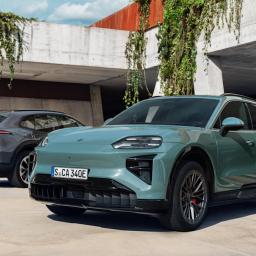 |
by Lawrence Bonk on (#71K4K)
Porsche just revealed the long-awaited Cayenne Electric luxury SUV, which is being called the "most powerful production Porsche of all time." The specs back this up, as the new Cayenne seems like an absolute beast.It boasts up to 1,139hp of power, translating to 850kW. The vehicle can hit 162MPH and go from 0 to 60 miles per hour in just 2.4 seconds. The recently-released rear-wheel drive electric Taycan sedan takes 4.5 seconds to reach 60 miles per hour. Of course, these specs vary depending on several configuration options.The EV Cayenne does include the company's "push to pass" button, which provides a ten second power boost. This adds approximately 173hp to let you squeeze past a slowpoke on the highway.Porsche is also claiming that the Cayenne Electric is a towing powerhouse. The company says it can tow up to 3.5 tons, which works out to over 7,700 pounds, when properly equipped. That's an absolutely insane metric, as 3.5 tons is heavier than a modern pickup truck with all possible bells and whistles.This is an EV so we gotta get into charging. Porsche says it features up to 400kW of charging power under ideal conditions, which should let it go from 10 to 80 percent in under 20 minutes. It's also the first electric Porsche to support inductive charging. The vehicle will come equipped with a Tesla Supercharger/NACS fast-charging port on the driver side and a CCS/AC port on the passenger side.PorscheIt's also the first EV SUV to get the company's Active Ride technology. This is the hydraulic suspension system found on the Taycan and Panamera.As for the interior, you can't miss the unique bending screen. This is called the Flow Display, and it's a vertically-installed screen in the center that curves toward the bottom. It's the largest display ever in a Porsche and will run on the company's brand-new OS. We don't have actual measurements for this display, but we do know that it's bookended by a separate 14.25-inch OLED instrument cluster. There's also an optional passenger display.PorscheThe OS includes a new AI-powered voice assistant. Porsche says this system can understand complex instructions and take actions accordingly. We'll have to see how that works out in the real world. Porsche says the assistant can adjust climate controls, seat heating and ambient lighting, while also taking stuff like traffic and local points of interest into account.Now onto the bad news. This is a Porsche so the new Cayenne will absolutely demolish any and all bank accounts. The standard version starts at $111,000, while the Cayenne Turbo Electric starts at $165,350. Preorders are open right now, with customer deliveries expected in the summer.This article originally appeared on Engadget at https://www.engadget.com/transportation/evs/porsche-has-electrified-the-cayenne-and-its-a-beast-163443958.html?src=rss
|
 |
on (#71K1R)
Ghost of Ytei is a lengthy game with tons of activities to do. But if you've beaten it and are already itching to jump back in, it might be best to wait until at least November 24 to do so. That's when developer Sucker Punch will release an update that will introduce a bunch of new features to the PS5 title, including a New Game+ mode.That means you'll be able to experience Atsu's mission for revenge from the beginning again with all of the weapons, abilities and armor sets you unlocked from your first playthrough. Those early-game enemies are about to feel the wrath of many a flaming kusarigama.You'll need to finish the main story before you can unlock New Game+, which includes tougher difficulty options and a pair of new trophies to snag. The free update will introduce extra upgrades for existing weapons and armor sets, along with a new ghost flowers currency that you can swap for fresh armor sets, weapon dyes and charms while playing New Game+.There are a number of features coming to the base game as well (i.e. for all players, not just those who dip into New Game+). Directional button remapping is one of several new accessibility options. Photo Mode will gain new filters, a shutter speed tool and a composition grid. Also, after you've beaten the main story, you'll be able to replay missions and quests. With a new stats display, you'll be able to see how long it took you to win a given duel, for instance.Ghost of Ytei isn't getting an expansion quite yet. We're crossing our dual katana for an Iki Island-style DLC for the game. In any case, Sucker Punch has already confirmed that Ghost of Ytei Legends - which will be akin to the multiplayer mode in Ghost of Tsushima - is on the way in 2026.
|
 |
on (#71K1S)
You have to give Porsche credit for going in early on EVs. The Taycan is a stellar sedan/wagon that's only gotten better. But even for a niche manufacturer like Porsche, it's not exactly a mass-market machine. To really move the needle on EVs, you need something more family friendly, and for the brand from Stuttgart, that's the Macan.Porsche's gas-powered crossover SUV is its best-selling machine in the US, so it's an absolutely vital piece of the company's success. It's also Porsche's second full-on, battery-powered machine to hit the market. The Macan Electric doesn't replace its internal combustion predecessor, rather living alongside it on the dealership floor, creating a brutal sibling rivalry and a potentially difficult choice for buyers: gas or electric?Actually, Porsche made it a pretty easy decision. This is the right one.Hardware tourThe Macan Electric shares a silhouette and a segment with that other Macan, but from a technology standpoint, there's little the two agree upon. The Macan Electric is built on a new platform called PPE, which at one point was destined to be the underpinnings of a smorgasbord of electrified offerings from both Porsche and Audi, including the A6 E-Tron and Q6 E-Tron.For now, at least, Americans' increasingly fickle attitudes toward EVs have stymied some of those plans, meaning this Macan and the upcoming Cayenne Electric are the only two Porsches built from those bones. The Macan is the smaller of the two, powered by a variety of different configurations, starting with a single-motor, rear-drive configuration with 355 horsepower on the low end, up to the 630-hp, dual-motor Macan Turbo Electric on the high end. Buyers can also select the dual-motor Macan 4 Electric, speedier 4S Electric or quicker still GTS Electric.I tested a base Macan Electric, its rear-mounted, 355-hp motor enough to scoot this 5,004-pound SUV from zero to 60 mph in 5.4 seconds. The top-shelf Macan Turbo Electric gets to 60 in 3.1 seconds, absolutely humiliating the quickest exhaust-spewing Macan GTS's 4.3-second time. At first glance, the electric Macan looks like a Tesla Model Y -- especially in dark blue. Tim Stevens for Engadget Of course, this is a Porsche, not a drag machine, and so cornering is key. Helping with the handling is an adaptive air suspension that not only lets you go from stiff to firm at the twist of a knob but also raises or lowers dynamically. When you're hunting for range or speed, the SUV gets down into an aerodynamic tuck low to the earth. If you're looking to head off-road, it'll hike itself up by 1.6 inches.While I wouldn't consider this an off-roader as such, the dual motor configurations should be competent in lower-grip situations. Open differentials at either end will keep your all-roading aspirations limited, but on some icy, slippery roads during the week I spent living with one, even the rear-drive Macan proved sure-footed and easy to handle, despite its summer-oriented Pilot Sport EV tires.At the heart of all that is a 100-kilowatt-hour battery, which offers the Macan Electric an EPA-rated range of up to 315 miles, depending on which trim you go with. In my testing, which included extended periods of driving with my foot flat to the floor, I managed 2.8 miles per kWh. That's a theoretical maximum range of 280 miles if you're driving like you stole it. Anyone doing the school run in a more sedate way will have no problem meeting or beating that EPA rating.User interface The Macan's interior is equipped with multiple displays. Tim Stevens for Engadget Beyond performance, the Macan Electric has another advantage over its internal combustion counterpart: it has a more modern interior. The highlight is the 12.6-inch, curved gauge cluster. Using buttons on the steering wheel, you can cycle through various views and telemetry elements to suit your desire for data or need to remain undisturbed.That's paired with a 10.9-inch touchscreen in the middle, and you can even opt for a third display embedded way over on the right side of the dashboard. This one allows you to access streaming services like YouTube. I've never seen the point in that, though, but that's only because I've yet to meet a passenger who wouldn't rather just use their smartphone.Porsche's PCM interface on that central touchscreen is simple and clean, with more than a passing iOS resemblance. Perhaps that's why the company has been an early adopter of CarPlay Ultra. For the Android faithful, wireless Android Auto is here too, and it works great, looking nearly native on the widescreen display. The Macan's gauge cluster is a curved 12.6-inch display. Tim Stevens for Engadget Through simple menus, you can do everything from track lap times to enable or disable the augmented digital engine tone, which Porsche calls Electronic Sport Sound. I confess the futuristic whirring and whooshing does make driving aggressively a bit more fun, but most of the time I prefer to have it off.Thankfully, not everything is controlled through the touchscreen. There's a separate, capacitive-touch panel just below it for climate-related functions, including toggling the prodigiously warm heated seats (which I'm enjoying as I write this). You'll find a physical volume knob there, too.The Macan seats five comfortably, though I'd stick to four for anything longer than a quick run to a team lunch. Front and rear seats are comfortable, and there's a tolerable amount of legroom in the back. Headroom back there, though, is limited. If you have tall co-workers, they'll be tripping over each other to call shotgun.Dynamics Despite it's size, the Macan is surprisingly agile, which is partly due to its unique suspension. Tim Stevens for Engadget In the grand spectrum of SUVs on the roads today, the 188.3-inch-long Macan Electric is on the smaller side. But, as an EV, it's heavy for a crossover. At just a tick over 5,000 pounds, it's a substantial 850 pounds heavier than a regular base Macan.Porsche's engineers addressed that as best they could with the aforementioned fancy suspension, plus larger, 20-inch wheels on each corner. The result is an SUV that is, in Sport or Sport Plus modes, remarkably fun to drive. Its steering is extremely quick for an SUV, which makes this thing feel lighter than it is.All the grip provided by those tires and suspension really gives you the confidence to push through the corners, too. And, when you push too hard, it breaks away quickly and predictably. I enjoyed romping on the throttle hard mid-corner to kick the tail out, the Macan giving me just enough time to grin and give a bit of a steering correction before everything was right and the tires were stuck again.It's not a sports car, no doubt about that, and it tends to wallow a bit on bumpy roads thanks to all that weight, but it is far more engaging and fun than just about anything else in this category. Even this base model is quick off the line, but its breakneck initial throttle response is tempered by a somewhat flat acceleration at higher speeds. It just doesn't have the kind of Autobahn-dominating top-end that Porsches are typically known for. The electric Macan's biggest flaw is the complete lack of lift-off regenerative braking. Tim Stevens for Engadget I suppose I'd have to cough up the extra $10,000 for the GTS, or a further $20,000 for the $109,000 Turbo if I really wanted that. Yes, these things get expensive quick. The base Macan Electric I drove started at $73,500, but carried enough options to drive its out-the-door price to $86,865.You are, at least, getting a machine that readily does double-duty. Despite its responsiveness and eager handling, the Macan Electric does a stellar job of settling down when you twist that Drive Mode knob on the steering wheel to the left, unwinding the suspension and relaxing the experience. The SUV manages excellent compliance over broken roads, flying over railroad tracks without complaint, and just generally being a calm and competent cruiser.But there's one, undeniable flaw that drove me absolutely nuts in the Macan Electric: a complete lack of lift-off regenerative braking. Porsche continues its adamant refusal to offer anything even approaching a one-pedal driving experience. That's a frustrating thing to me - maybe not quite as frustrating as GM phasing out Android Auto and Apple CarPlay, but pretty close.Wrap-up The electric Macan commands (at least) a $10,000 premium over its gas-powered sibling. Tim Stevens for Engadget After driving a few different prototypes of the Macan Electric during its development phase, I very much enjoyed my time with a final, production version on some familiar roads around my home. It excelled in the dry and on slippery, early winter roads, made me smile when I was feeling rowdy, and then disappeared into the background when I just wanted to get home.It isn't a perfect machine. I'd hoped for a little more roominess inside, I lament the lack of one-pedal driving, and honestly, I wish Porsche's exterior designers had gone a little crazier. At a quick glance, it looks a lot like a first-gen Tesla Model Y, especially in Gentian Blue Metallic, which is a dead ringer for Tesla's Deep Blue Metallic.And there's also the significant premium that you'll have to pay to get into one: $10,000 over a base, gas-powered Macan. For that, you're getting a lot of extra performance, a dose of extra tech and all the joys and simplicities that come with living the EV lifestyle. That makes it well worth it in my book.
|
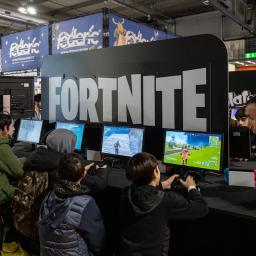 |
on (#71JZG)
Unity and Epic Games, the creators of today's biggest video game engines, have announced a partnership that will make Unity games available in Fortnite. Epic has allowed creators to publish their own experiences (or islands") within Fortnite since 2018, and the number of experiences has grown considerably over the recent years. In 2024, 198,000 islands were published within the game, double the number from the previous year. This partnership has the potential to grow Fortnite experiences even further by welcoming Unity developers and can give existing developers more freedom.Just like the early days of the web, we believe that companies need to work together in order to build the open metaverse in a way that's interoperable and fair," said Tim Sweeney, the CEO of Epic Games, in a statement. Working alongside Unity we're helping developers build fun games, reach bigger audiences, and find success." Sweeney announced the partnership with Unity CEO Matt Bromberg at Unity's annual developer conference. They said that developers will be able to publish games that use Unity's game engine on Fortnite sometime next year. The companies promised to announce more details and exact timing in the future.
|
 |
by Igor Bonifacic on (#6G1HP)
The year may not be over, but 2025 is all but guaranteed to go down as one of the best 12 months in gaming history. Between releases like Hades 2, Hollow Knight: Silksong and Ghost of Yotei, to name just a few, there was truly something for everyone in 2025. Of course, that abundance also means it can be tricky to find a gift for the gamers in your life, especially if you're not one yourself. Worry not - Engadget is here to help. We guarantee this guide will help you find the perfect gift for your friend or loved one. Best gifts for gamers Check out the rest of our gift ideas here. This article originally appeared on Engadget at https://www.engadget.com/gaming/the-best-gifts-for-gamers-in-2025-150008395.html?src=rss
|
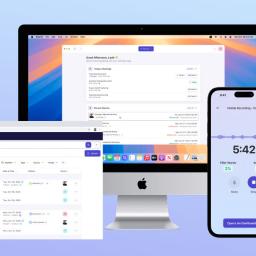 |
on (#71JZJ)
You probably haven't heard of Read AI. The company has quietly been making a name for itself in the crowded AI space, signing up 50,000 customers daily in recent months. At first glance, Read AI resembles apps like Otter.ai. You can use the software to transcribe and summarize meetings, but it's also more ambitious than that."It's AI on standby," Read AI CEO David Shim explains, adding that the company's vision is to give people a tool that can record, transcribe and analyze nearly every professional conversation they have, no matter where those discussions take place and whether they occur online or in-person. Today, Read AI is taking a major step toward realizing that vision with the release of its new Operator agent (I'll admit, the company could have picked a more original name), and new apps for Windows, macOS and Android.Between its own software, including an existing iOS app, and third-party integrations, Read AI users can now connect their accounts to more than 22 other platforms. Some of the more notable inclusions there are Gmail, Outlook, Slack, HubSpot and Notion. More importantly, with Read AI's mobile apps, you can record impromptu in-person meetings; the company has data showing that more than half of professional conversations occur outside of online spaces.In any case, no matter where you talk to your colleagues, Operator is there to generate notes and insights. "We don't just look at meetings," Shim says. "We look at topics that are interesting to you." To that end, Read AI has built a series of in-house multimodal models that look for context beyond what's said during any interaction you record. For example, the company's systems are designed to catch when you enthusiastically answer a question or look away in disinterest, and use that data to decide how the software goes about summarizing your meetings."That context is what enables us to identify what is valuable to you, and make that discoverable," says Shim. One way Read AI will surface those insights is through a feature the company calls Monday Brief. At the start of every week, you'll get a summary of all the calls and conversations you had over the last seven days, with suggestions for follow-up actions you can take.Now, you might be wondering, like I was, how Read AI hopes to compete in a market where a company like Microsoft is aggressively pushing Copilot on its users. If Shim is worried about the big players, he doesn't show it. "There's a need for an independent third party," he says. "There's always something new coming out. And that ability to be the independent third-party that plugs into different solutions is actually what consumers want and need." To his point, since the launch of Copilot two years ago, Read AI has seen a 20x increase in the daily number of people using its software alongside Microsoft Teams. "We've seen the same thing along those lines for Zoom and Google Meet."He believes the company's approach to data privacy is another differentiator. By default, users are opted out of their data being used for training Read AI's future models. Shim also notes the company takes recording disclosure seriously. "You need to notify people that you're [recording] a call, and we put that front and center every single time."If you want to try Read AI, the company offers a free plan that includes five meeting transcripts per month. Pricing for its paid subscriptions start at $19.75 per month.This article originally appeared on Engadget at https://www.engadget.com/ai/read-ai-is-building-a-note-taking-app-that-works-nearly-anywhere-130000235.html?src=rss
|
 |
on (#71JXG)
When Meta announced last year that it was ditching third-party fact checkers in favor of an X-style Community Notes system, the company was careful to note that it would only implement the changes within the United States to start. Now, nearly a year later, the social media company is getting ready to expand the crowd-sourced fact checks to more countries, and is asking the Oversight Board for advice on a potential rollout.The company has requested that board weigh in on "factors we should consider when deciding which countries, if any, to omit from the international roll out" of Community Notes. Notably, Meta isn't asking the Oversight Board to advise on the merits of replacing traditional fact-checking organizations. Instead, the company wants guidance on how to approach country-specific challenges and whether there should be any carveouts."We respectfully ask the Board to focus its examination on the country-level factors relevant to omitting countries from the international roll-out, and not on topics such as general product design or the operation of the Community Notes algorithm," the company wrote in its request shared by the board.Up to now, Meta has been experimenting with Community Notes on Facebook, Instagram and Threads in the United States only. People who want to be able to author notes still need to be approved, but the company allows anyone to rate notes. However, it seems that the feature so far hasn't gained as much traction for Meta as it has on X. In September, the company said that just 6 percent of the more than 15,000 notes that had been contributed had actually been published.In a statement from the Oversight Board, the group said it would consider issues like whether a crowd-sourced fact checking system would make sense in countries with "low levels of freedom of expression" or without a free press, as well as places with "low levels of digital literacy." It also said it was hoping to hear public comments from researchers who have studied different approaches to countering misinformation.Unlike with a typical case from the Oversight Board, which deals with specific content moderation decisions, Meta has no obligation to implement any of the group's recommendations. But, the company has previously chosen to follow its suggestions in previous policy advisory opinions, including its decision to roll back COVID-19 misinformation rules following a recommendation from the board.This article originally appeared on Engadget at https://www.engadget.com/social-media/meta-asks-the-oversight-board-to-weigh-in-a-little-on-community-notes-ahead-of-expansion-110000208.html?src=rss
|
 |
by Valentina Palladino on (#5X33K)
Robot vacuums have become ubiquitous over the past few years, in the sense that there are more options to choose from now than ever before. In their early years, you'd have to dish out $500 or more to get a decent robot vacuum, but that's not the case anymore. Sure, you could pick up a $1,000 cleaning behemoth with mopping features, but it would be incorrect to assume that you need to spend that much money to get a good machine.
|
by Devindra Hardawar on (#6CAEH)
Even though just about everything is getting more expensive these days, it's still possible to find a few cheaper gaming notebooks under $1,000. If you're just looking to hit 60 fps to 120 fps of performance, or you just want to play the latest games without cranking up your graphics settings, these are the notebooks to consider. You'll still find high refresh rate displays, as well as modern CPUs and GPUs. Just be prepared to live with slightly flimsier build quality, as well as plastic cases. Table of contents
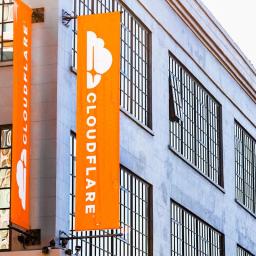 |
on (#71JRS)
Cloudflare wrongly suspected that the widespread outage that took numerous websites offline on November 18 was caused by a DDoS attack, the company's CEO has admitted. In his blog post that breaks down what happened, however, Matthew Prince explained that after realizing their mistake, his team was able to fix the issue. The issue was not caused, directly or indirectly, by a cyber attack or malicious activity of any kind," he wrote. It was instead caused by a change to its database systems' permissions, which led to an issue with a file used by its Bot Management system.The company's Bot Management system uses a machine learning model to score bots for every request they make when they crawl Cloudflare's network. Its clients rely on those bot scores to decide whether to allow or to block specific bots from accessing their websites. One the uses of having bot scores is being able to block AI companies' bots so they can't use a website's content to train their LLMs. In July, Cloudflare launched an experiment called pay per crawl," which allows website owners to let an AI bot crawl their pages if they get paid for access.Prince said the model relies on a feature" configuration file to make a prediction on whether a bot request was automated or not. The feature file is refreshed every few minutes, and a change in the underlying mechanism generating that file caused a change in its size that triggered the error. As a result, HTTP 5xx error codes were returned by the core proxy system that handles traffic processing for our customers, for any traffic that depended on the bots module," Prince wrote.This recent event has been Cloudflare's worst outage in years. The company said it hasn't had an outage that has caused the majority of core traffic to stop flowing through [its] network" since 2019. Prince apologized for the issue on behalf of his team.
|
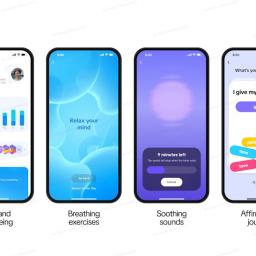 |
on (#71JRV)
TikTok is replacing its screen time management page with a Time and Well-being space, which also comes with new wellness features. You can now find an affirmation journal, where you can set your intentions for the day using the 120-plus cards the app provides. You can, say, choose the grace" card that reminds you to be free of the expectation of others. The card is downloadable on your device, and you can share it with others.You'll also find an in-app soothing sound generator that you can use to listen to relaxing audio, such as those featuring the sound of rain, waves and white noise. The sounds stop after a few minutes when the timer ends, so you can play them to induce sleep when you go to bed. TikTok says its users are 14 percent more likely to listen to music to help them relax or go to sleep than non-users. You'll also find different types of breathing exercises you can do in the new space.In addition, TikTok is rolling out new well-being missions, expanding the original set it launched in July. These missions, which are particularly designed for teens, will reward you with badges for completing challenges related to balanced digital habits. The new Sleep Hours Mission will award you with a badge if you stay off TikTok at night, while the daily screen time mission will earn you another if you set a screen time limit and manage to stick to it. There's also a new weekly screen time mission that will prompt you to check your screen time report every week, as well as a well-being ambassador mission that will earn you badges if you invite others to do the missions.This article originally appeared on Engadget at https://www.engadget.com/social-media/tiktok-now-has-an-in-app-affirmation-journal-and-sound-machine-050100713.html?src=rss
|
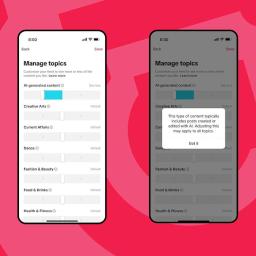 |
on (#71JRT)
TikTok is the latest social platform to hand users more control over the amount of AI-generated content they see. The app is experimenting with a new setting that will allow users to request to "see less" AI in their "For You" feed.The new toggle will be available in the coming weeks" in the app's "manage topics" section that lets people personalize the types of videos more likely to appear in their feed. In a blog post, TikTok says the control is meant to help users "dial things down" if they want to see less AI content in their recommendations. The update follows a similar move from Pinterest, which has faced complaints about AI slop drowning out authentic images on the platform.TikTok, like most other platforms, has seen an influx of AI-generated content in recent years. The company, which requires users to label such creations, says that there are more than 1.3 billion videos with these labels. At the same time, the company notes that its existing methods for detecting AI content aren't perfect, Currently, TikTok relies on a widely-used watermarking system called Content Credentials that adds metadata to AI-generated content. But these signals can get harder to detect when images or videos are edited in other apps or copied and reshared to other sites, as often happens with viral content.To address this, TikTok says that it will also experiment with an additional "invisible watermarking" system that could help it identify and label AI content more reliably. "'Invisible watermarks' add another layer of safeguards with a robust technological 'watermark' that only we can read, making it harder for others to remove," the company explained.This article originally appeared on Engadget at https://www.engadget.com/social-media/tiktok-will-let-users-tone-down-the-amount-of-ai-content-in-their-feed-050100596.html?src=rss
|
 |
by Andre Revilla on (#71JN6)
Jeep says that the all-electric 2026 Jeep Recon will finally begin production "early next year." This comes three years after the model's original announcement amid multiple delayed starts.Built on a dedicated EV architecture, the Recon will deliver 650 horsepower and 620 ft-lb of torque. Its 100kWh battery pack will have an estimated 250 miles of range on a full charge and accelerate from 0-60 mph in as little as 3.6 seconds.The Recon is billed as the first and only fully electric Trail Rated SUV in the industry. This means it meets Jeep's internal standards for the traction, water fording, maneuverability, articulation and ground clearance necessary to earn the Trail Rated badge. Bolstered by its 4X4 capability and 33-inch tires, the Recon can tackle a wide range of terrains.The Jeep Recon was originally supposed to be available in 2024, though the closest we got to seeing it in action was spy photos of a possible prototype at the tail end of that year. Last month Jeep CEO Bob Broderdorf told MotorTrendthat the Recon was coming to showrooms "next spring." The Jeep website, which may need some updates, still says "coming late 2025."Jeep had previously introduced multiple hybrid models including a hybrid version of the Grand Cherokee and Wrangler. Both models were subject to substantial recalls this year due to fire risks in their batteries, encompassing over 375,000 vehicles. This came after a similar recall for Jeep hybrids the year before 194,000 vehicles, also due to fire risks.The EV will have a starting MSRP of $65,000 and Jeep says production will take place at the Toluca Assembly Plant in Mexico.This article originally appeared on Engadget at https://www.engadget.com/transportation/evs/the-all-electric-jeep-recon-gets-official-specs-and-launch-price-000032015.html?src=rss
|
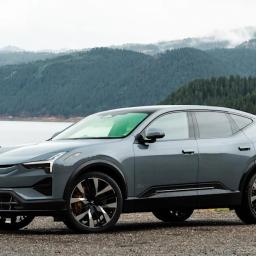 |
on (#71JK4)
EV maker Polestar has announced that it's bringing bi-directional charging - the ability for an electric car to be tapped as a battery for your home or the grid - to Polestar 3 owners who live in California. The feature is one of several ways EV owners can save money with their electric car, by either using less energy overall, or receiving credits for providing their excess power to the grid.Polestar's bi-directional charging feature uses direct current, according to the company, and enables "V2H functionality for Polestar 3 customers on the 400 Volt electrical architecture." Polestar is offering the feature in partnership with home energy company dcbel, who helps administer a California Energy Commission program for installing "home energy stations" that can manage multiple clean energy sources in residential homes, including EVs with bi-directional charging. Polestar claims that using dcbel's Ara system, customers can "reduce charging costs by up to $1,300 per year and use their car as an energy backup during blackouts for up to 10 days."The ability to send excess charge from an EV battery back into your home was originally a major selling point of Ford's F-150 Lighting. Bi-directional charging has also shown up on GM's EV lineup and the third-generation Nissan Leaf. Polestar says it'll continue the development of the bi-directional charging capabilities of its cars and "plans to introduce a wider offer in the future." While this partnership is the first time the EV maker is offering the charging feature in the US, Polestar already offers bi-directional charging to customers in Germany via a home charger it developed with Zaptec.If you live in California and own a Polestar 3, you can apply for rebates on a home energy station at dcbel's website so you can try the feature for yourself.This article originally appeared on Engadget at https://www.engadget.com/transportation/evs/polestar-evs-can-power-your-home-in-california-220215757.html?src=rss
|
 |
on (#71JGP)
Typography nerds and Android fans, rejoice: You can now download an official version of the next generation of Google's brand typeface." The company has released the Google Sans Flex font to the public for free.The variable sans-serif font is part of Google's Material 3 design language, which arrived in 2023. 9to5Google notes that it's since been integrated into many of the company's products, including in some corners of Pixel software.A 2024 Google Design blog post about variable typography highlights the font's flexibility, as seen in the image above. Casey Henry, a designer with the company, wrote that Google Sans Flex "allows the font's letterforms to shape-shift at different scales." OpenType Font Variations is the standard Google uses for variable fonts.Meanwhile, a Reddit thread about the download dove deeper into typography nerdery. Interesting behaviour when you condense the width," u/hbpencil102 wrote. Instead of circles becoming ovals, they become more rectangular with rounded tops and bottoms, reminding me of DIN 1451." Amen to that.You can download Google Sans Flex from Google Fonts.This article originally appeared on Engadget at https://www.engadget.com/big-tech/the-google-sans-flex-typeface-is-now-available-to-download-214535934.html?src=rss
|
 |
on (#71JGQ)
Nominees for The Game Awards were released yesterday, and there's a whole lot of indie excellence on display. However, one notable contender among them has decided to withdraw from contention.The fabulously titled Megabonk received a nod for the Best Debut Indie Game category. However, the project creator, who currently goes by vedinad, announced on X today that they were withdrawing. "I've made games in the past under different studio names, so Megabonk is not my debut game," the solo dev said.
|
 |
on (#71JE5)
Meta has successfully avoided what was once the biggest existential threats to its company. A federal judge has sided with the social media company in a landmark antitrust case, ruling on Tuesday that the Federal Trade Commission (FTC) had not proven that Meta is a monopoly.The FTC filed antitrust charges against Meta, then known as Facebook, in 2020 during President Donald Trump's first term. The government had argued that by acquiring its one-time rivals, Instagram and WhatsApp, the company had hurt US consumers by stifling competition in the social media industry. Meta had argued that those services were only able to grow to the 1 billion-user apps because of its investment and had cited the rise of TikTok as proof that it continues to face strong competition.On Tuesday, US District judge James Boasberg ruled in favor of Meta. "Whether or not Meta enjoyed monopoly power in the past, though, the agency must show that it continues to hold such power now," he wrote. "The Court's verdict today determines that the FTC has not done so."If the FTC had succeeded, it could have called for Meta to unwind its acquisitions of WhatsApp and Instagram. "We are deeply disappointed in this decision," the FTC's director of public affairs Joe Simonson said in a statement. The deck was always stacked against us with Judge Boasberg, who is currently facing articles of impeachment. We are reviewing all our options." The FTC could still appeal the ruling, though it's not clear if it plans to do so."The Court's decision today recognizes that Meta faces fierce competition," a Meta spokesperson said in a statement. Our products are beneficial for people and businesses and exemplify American innovation and economic growth. We look forward to continuing to partner with the Administration and to invest in America."A number of current and former high-profile executives, including Adam Mosseri, Sheryl Sandberg, Kevin Systrom and Mark Zuckerberg testified during the weeks-long trial earlier this year. In his testimony, Zuckerberg spoke about the immense pressure Meta felt from TikTok, saying that Meta's growth had "slowed down dramatically" as TikTok became more popular.It turns out that Meta's defense that TikTok and YouTube are major competitors to it helped sway Judge Boasberg. While the FTC's lawyers had tried to claim that Meta had a monopoly on "personal social networking" apps - a narrow group it said included Snapchat and the decentralized app MeWe - Boasberg was unable to ignore the dominance of TikTok and YouTube."PSN [personal social networking] apps may have been a market unto themselves when the FTC filed this case in 2020 or when it approved Facebook's acquisitions of Instagram and WhatsApp in 2012 and 2014," he wrote. "That is no longer the case. The Court ultimately finds that YouTube and TikTok belong in the product market, and they prevent Meta from holding a monopoly. Even if YouTube is out, including TikTok alone defeats the FTC's case."Update, November 18, 20225, 12:08PM PT: Added a statement from the FTC.This article originally appeared on Engadget at https://www.engadget.com/social-media/meta-has-won-the-antitrust-case-that-could-have-forced-it-to-spin-off-instagram-and-whatsapp-184320742.html?src=rss
|
 |
on (#71JE6)
Who needs a revamped Mac Pro when you can just turn several Mac Studios into a unified computing system? With the upcoming macOS Tahoe 26.2 release, Apple is introducing a new low-latency feature that lets you connect several Macs together using Thunderbolt 5. For developers and researchers, it's a potentially useful way to create powerful AI supercomputers that can run massive local models. That allows four Mac Studios, which can each run up to 512GB of unified memory, to run the 1 trillion parameter Kimi-K2-Thinking model far more efficiently than PCs with power-hungry GPUs.While we've seen Thunderbolt Mac clusters before, they were limited by slower Thunderbolt speeds, especially if they required a hub (which could reduce speeds to 10 Gb/s). Apple's new feature allows for the full Thunderbolt 5 connectivity of up to 80Gb/s. The clustering capability also isn't just limited to the pricey Mac Studio, it will also work with the M4 Pro Mac mini and M4 Pro/Max MacBook Pro. Developers won't need any special hardware to build clusters, just standard Thunderbolt 5 cables and compatible Macs.In a demo, I watched as a cluster of four Mac Studios loaded and ran that massive Kimi-K2-Thinking model in an early version of ExoLabs's EXO 1.0. Notably, the cluster used less than 500 watts of power, which is around 10 times lower than a typical GPU cluster (NVIDIA's RTX 5090 is rated for 575W, but its demands can also jump higher).macOS Tahoe 26.2 will also give Apple's open source MLX project full access to the neural accelerators on the M5 chip, which should dramatically speed up AI inferencing. Ironically, though, the only M5 Mac available today - the 14-inch MacBook Pro - only supports Thunderbolt 4. That means it won't be able to take advantage of the new Mac clustering capability.The unified memory and low power design of Apple Silicon already made Macs a useful choice for demanding AI work, but the ability to cluster multiple systems together over Thunderbolt 5 is potentially even more tempting to anyone working with large models. Of course, a Mac Studio with 512GB of RAM isn't cheap -- it starts at $9,499 with the M3 Ultra chip -- but that's only the highest-end option. Labs and companies that already have Mac Studios, Mac minis and MacBook Pros could potentially cluster systems they've already purchased.This article originally appeared on Engadget at https://www.engadget.com/ai/you-can-turn-a-cluster-of-macs-into-an-ai-supercomputer-in-macos-tahoe-262-191500778.html?src=rss
|
 |
on (#71JE7)
There's finally a way to gift games purchased on the Epic Games Store. Epic has announced that it's now possible to gift digital games through the Epic Games Store, provided the person you're sending them to has an Epic Games account.On a game's store page, you'll now see a Gift button under the normal Buy Now button. Clicking it will prompt you to log in to your Epic account if you haven't done so already, and then ask you to enter the Epic account of whoever you're sending the game to, pick one message from a selection of pre-written messages and then select the date you want the gift to "arrive."The menu that appears when you purchase a game as a gift.Ian Carlos Campbell for EngadgetEpic says that if the person you're sending the game to already owns it, you'll be automatically refunded. If the other person chooses to reject the gift, you'll also receive your money back. Not every purchase on the Epic Games Store can be gifted, though. Free games, subscriptions, "pre-purchase offers" and in-game currency are excluded.Gifting is a basic feature of online stores, so on some level it's more surprising that the Epic Games Store didn't have the feature than it is that gifting is being added now. One reason why, could be that most of Epic's focus for its digital store has been on undercutting the fees of both Steam and the Apple App Store.For example, in May, the company announced that it wouldn't take a cut of the first $1,000,000 in revenue that an app makes, after which it would only take 12 percent. That undercuts both Apple and Valve's financial arrangements with developers. Epic also regularly offered free games through its game store to lure new users, something it plans to continue to do with its mobile app store.This article originally appeared on Engadget at https://www.engadget.com/gaming/pc/epic-games-store-will-finally-let-you-gift-games-191000946.html?src=rss
|
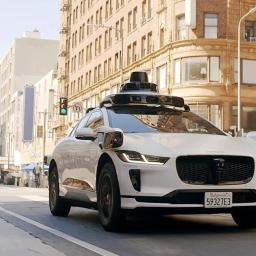 |
on (#71JE8)
Waymo is launching in five new cities across Texas and Florida. Autonomous vehicles in Miami, Dallas, Houston, San Antonio, and Orlando will begin accepting rides next year.The Alphabet-owned company said operations (sans passengers) will begin on Tuesday in Miami. The other cities will follow "over the coming weeks." This phase is where the vehicles drive around town without anyone inside. That gives the company a chance to spot local quirks and adjust the driving algorithm accordingly.Waymo said this local adjustment phase requires fewer changes with each added city. "This data feeds into a flywheel of continuous improvement, bolstered by rigorous validation through real-world driving and advanced simulation, then implemented through regular software releases," it wrote. The company claims its robotaxis are involved in 11 times fewer serious injury accidents than human drivers.Waymo's autonomous vehicles currently accept passengers in the San Francisco Bay Area, Los Angeles, Phoenix, Atlanta and Austin. The list of "up next" cities is much longer, including a recently announced expansion into San Diego, Detroit and Las Vegas.This article originally appeared on Engadget at https://www.engadget.com/transportation/waymo-is-coming-to-five-more-cities-190000992.html?src=rss
|
 |
by Lawrence Bonk on (#71JE9)
Hypixel Studios has officially purchased the license to Hytale from Riot Games, according to a report by Game Developer. This means that development will continue just months after Riot shut everything down and cancelled the project.The developer is also rehiring 30 staffers that were laid off as part of the cancellation. We write so often about layoffs in the industry, so it's always a distinct treat to cover the opposite.
|
 |
on (#71JBN)
Fresh off a reorganized deal with OpenAI, Microsoft is diversifying its AI investments. The company says it will invest up to $10 billion in Anthropic. Meanwhile, NVIDIA has pledged up to $5 billion in the Claude maker. The three-way partnership, which includes various other commitments, could be seen as further evidence that an AI bubble is about to burst.As part of the deal, Anthropic has committed to buy $30 billion of Microsoft Azure cloud computing capacity. Anthropic says it will also contract additional capacity, up to one gigawatt. In addition, Microsoft Foundry customers will gain access to several Claud models. These include Sonnet 4.5, Opus 4.1 and Haiku 4.5.Meanwhile, NVIDIA and Anthropic will work together to improve Anthropic's AI models for NVIDIA hardware. The pair will also optimize future NVIDIA architectures for Anthropic's needs.All of this is against the backdrop of Microsoft's recently renewed partnership with OpenAI, which loosens their exclusivity. It didn't take long to see the apparent fruit of that. Early this month, the ChatGPT maker signed a $38 billion cloud contract with Amazon. And last week, Anthropic said it will use AWS AI chips after Amazon invested an additional $4 billion in the Claude maker.The two Spider-Men meme: two versions of the web-slinger, pointing at each other.Marvel.comDizzy yet? To borrow imagery from the "two Spider-Men" meme, the AI world increasingly looks like a big circle of web-slingers, all pointing at each other. Only in this case, each index finger is flinging billions of dollars to help prop up the other Spider-Men. (Pay no mind to the AI layoffs.) It's too early to say how this all plays out, but the circular nature here makes it easier to understand why some believe we're looking at a bubble. NVIDIA's earnings tomorrow could tell us more.This article originally appeared on Engadget at https://www.engadget.com/ai/microsoft-and-nvidia-will-invest-up-to-15-billion-in-anthropic-173432863.html?src=rss
|
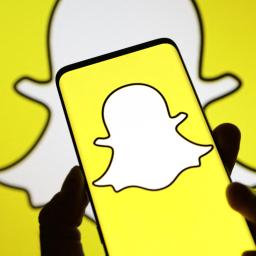 |
by Matt Tate on (#71JBP)
Snapchat has introduced a new feature called Topic Chats," which allows users of the social network to participate in public conversations about popular trends. By its own admission, Snapchat has previously focused on private conversations, but says the growth of its TikTok-like Spotlight feature made it clear that people want to comment publicly about topics they're interested in.Topic Chats, which are coming to Canada, New Zealand and the US first, will appear in different areas of the Snapchat app in the shape of a big yellow button that says "Join the Chat." Tap it and you'll join that conversation, where you can also browse related Spotlight videos. The company used F1 and the reality show Below Deck as examples of topics that could feature.Snapchat will show you when your friends are in a particular chat, and any that you join will then appear at the top of your personalized Topic Chat page. Snap says it will moderate the new platform to ensure it remains safe, and told TechCrunchthat it will use LLMs, among other measures, to ensure that topics being engaged with are of an appropriate nature. All profiles will remain private unless you're already friends, which Snap says will prevent unwanted friend requests or direct messages.Topic Chats are set to go live in the coming weeks, and will appear in Chat shortcuts and the Stories page, as well as when searching or viewing Spotlight videos.This article originally appeared on Engadget at https://www.engadget.com/social-media/snapchats-new-topic-chats-feature-makes-it-easier-to-comment-publicly-on-things-youre-interested-in-171111409.html?src=rss
|
 |
on (#71J82)
When a brand new company debuts its first product at CES, it can take a while before the device makes it to market. In fact, sometimes those products don't make it at all. That's not the case with Seergrills though, as the company has started shipping its AI-powered Perfecta grills to early adopters after introducing the machine at CES 2024.The Perfecta relies on AI-powered cooking tech that helps you create chef-quality results" in a fraction of the time as traditional grilling. It's powered by a quad-core processor and an arsenal of sensors which allow it to detect food thickness, temperature and doneness. All you have to do is select the food and desired sear and doneness levels via the built-in touchscreen or the Seergrills app.The Perfecta utilizes a vertical cooking system where food is held by so-called VertiGrates. Dual infrared burners move closer to foods as needed during the cooking process and can achieve a maximum temperature of 1,652 degrees Fahrenheit - hot enough to cook a steak in 90 seconds. Seergrills says the Perfecta can hit those temps in under two minutes, drastically reducing preheating times. This setup also means that there's no flipping required. The company says the configuration will consistently provide the perfect sear, doneness and moisture retention. Over time, the Perfecta learns from your culinary exploits, refining various cooking profiles to become more precise with each grilling session. The Perfecta has a vertical cooking configuration with infrared burners that move automatically during use. Seergrills And it's not just a grill either. The Perfecta has oven, pizza and rotisserie modes - if you splurge for the requisite accessories - and a manual mode (called Human Mode) for AI-free operation. What's more, you can build and save your own cooking profiles for future use.Despite the oven look, the Perfecta is very much an outdoor grill. It runs on 120-volt electricity and propane gas in order to power the electronics and those high-heat burners. The grill is built with aerospace-grade aluminum, marine-grade stainless steel and both ceramic and tempered glass. The cooking grates are made of naturally non-stick stainless steel and internal components also use stainless steel for easy cleaning. Lastly, the drip tray and grease management system are dishwasher safe.If you were waiting until the company starting shipping units before committing to one, you're going to have to wait even longer. Seergrills is now taking orders for its fifth wave of shipments, but those aren't scheduled to go out until May 2026. You're also going to pay a lot more for it. Back in 2024, the price tag on the Perfecta was set at $3,500, but now that has gone up to $5,999.This article originally appeared on Engadget at https://www.engadget.com/home/kitchen-tech/the-ai-powered-perfecta-from-seergrills-is-now-shipping-after-its-ces-2024-debut-163000474.html?src=rss
|
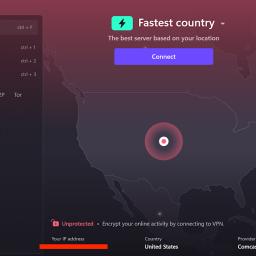 |
by Sam Chapman on (#71J83)
A VPN, or virtual private network, is a tool you can use to protect your identity online, change your virtual location, evade censorship, check out foreign streaming services and more. They mostly take the form of commercially available subscription apps, often so simple to operate that all you need to do is press a button to turn them on and off.While using a VPN is easy in practice, there's a lot going on under the hood. Knowing what's really happening can help you decide which VPN is right for you, then use it more effectively once you've got it. In this guide, I'm going to delve into what a VPN really is, how it works and what you might need one for.If this article convinces you that you need a VPN - and I hope it does! - I curate a collection of the best VPN deals that I update at least once a week. Head over there to get your VPN shopping started.What is a VPN?The name "virtual private network" comes from the initial use of the technology to access restricted networks from off-site - if you work remotely, you probably still use a VPN this way. Those are corporate VPNs, though, from providers like Cisco. Here, we're talking about commercial VPNs sold for individual use.These services came about when people realized that if you connected to the public internet through a VPN, every server you contacted would see the VPN server instead of your personal computer. The VPN effectively becomes a mask that interacts with the web on your behalf. That's the simple principle underlying every commercial VPN you've seen advertised.Sam Chapman for EngadgetVPNs like Proton VPN and ExpressVPN operate servers in various locations around the world. When you use their apps, you've got access to all the servers in their network. After you connect, communications between your device and your chosen server are encrypted so nobody can trace your activities back to you. This is called tunneling, and is the main difference between a full VPN and a simple proxy server.How does a VPN work?Questions like the above can get into the weeds fast, so I'll be oversimplifying here. VPNs handle encryption in two steps. First, they establish a secure tunnel to your computer or phone, then they send information through it.The first step - establishing the connection - is called a handshake. It uses asymmetric encryption, where each party has a public and a private key. In a handshake, two parties use public keys to confirm that they are who they say they are, then exchange the keys they'll use for simpler symmetric encryption.Sam Chapman for EngadgetOnce the handshake has confirmed the path between your device and the VPN server, the tunnel is complete. From then on until you disconnect, every packet of data you send will be encrypted before it leaves your device and not decrypted until it reaches the VPN. The same is true in the other direction. Website requests and other data sent between the VPN and your internet service provider (ISP) will not be encrypted, but that's OK - without the information on the first step, it's impossible to identify you behind the VPN.This is a complicated process, but VPNs use sets of instructions called VPN protocols to run through it near-instantly. A VPN protocol covers encryption and transit using several sets of ciphers. The most common protocols these days are OpenVPN, WireGuard and IKEv2/IPSec, though many VPN services have their own proprietary protocols as selling points.What are the benefits of using a VPN?Although the above process happens mostly in the background, it does tax your internet connection a little. The best VPNs keep impacts to a minimum, but you may notice a drop in speed, plus higher latencies when connecting to servers far away. So, what benefits do you get in exchange for all that?AnonymityThe first and biggest boon is near-total anonymity. In 2021, the Federal Trade Commission (FTC) put out a comprehensive report on everything your ISP knows about you - confirming that nearly every ISP gets a second profit stream from selling information on your online activities. In essence, they're making you pay them for the right to hose your own privacy. But a VPN lets you strike back.Since you connect to the VPN server before your ISP ever clocks you (let alone your destination websites), your computer and modem broadcast no information about who you really are. Anyone can see what you're doing, but they'll only see the VPN server doing it. And hiding your IP address is vital - lots of people (not just ISPs) can deduce a shocking amount about you with no other information, including your real location.Prevent ISP speed throttlingSpeed isn't normally one of the benefits of a VPN, but in some specific cases, you might get faster internet. ISPs occasionally throttle the speeds of certain users they perceive as using too much bandwidth. This can happen to you, whether or not the charge is accurate. Using a VPN can get around the slowdown, since the ISP can't identify you to throttle you. Just note you still can't go faster than your unprotected internet speed.Public Wi-Fi safetyA VPN can also keep you safe when using public Wi-Fi. On an unsecured Wi-Fi network - the sort you often find in cafes, hotel lobbies and other public buildings - hackers can spy on you through various vulnerabilities, or even set up fake networks (called "rogue hotspots") to capture your information. If your connection with the network is encrypted, the criminal's window of opportunity slams shut.Get around content blocks and firewallsThe other most important thing a VPN can do is to change your virtual location. IP addresses are keyed to specific locations - some to countries or regions, and some to networks as small as one building. Authorities can use this to restrict internet access on the networks they control. This can vary in scale, from your school or workplace blocking certain content, all the way up to the nation-level firewalls in China, Saudi Arabia and other countries.Remember, though, that your internet goes to the VPN before it goes anywhereelse. If your school's internet blocks some sites, you could get on a VPN server and the school's firewall won't know you're connecting from inside. This even works with countries (though not always). By connecting to a server outside the sphere of oppression, you can organize activism online even when the government doesn't want you to.Sam Chapman for EngadgetOf course, you can also use this trick for fun by checking out other countries' streaming libraries, viewing local exclusive events or protecting you while you download a torrent file. The key takeaway is that VPNs are versatile, and can be used for casual entertainment, life-and-death anonymity or both at once.Will a VPN keep me completely safe online?VPNs are a huge positive for individual privacy rights, but just having one doesn't mean you can ignore your online safety. It's better to think of VPNs as one part of a comprehensive strategy.A VPN keeps you anonymous, prevents you from being tracked and changes your location to bypass censorship. However, it can't directly protect you from downloading malware, falling for a phishing scam, oversharing information on social media, using an easily guessed password or getting your phone stolen in real life.There's one key difference between threats a VPN can prevent and those it can't: A VPN only protects you from being spied on without your consent. If all you're doing is browsing on a network, a VPN keeps you concealed. But today's malefactors have all sorts of tricks to get you to give your consent. Websites spam message windows until you click "allow cookies." Hackers send phishing emails and make you click links that download malware. And so on.Can VPNs be trusted?There's also one other critical point. Even if a VPN keeps you completely anonymous, the VPN itself can still tie your identity to what you do online. That's why VPNs all claim to have "strict no-logging policies" or something similar - they're promising not to abuse their access.Naturally, some do anyway. A VPN can be sued if it breaks its own privacy policy, but many escape liability by leaving just enough leeway that they technically aren't in violation. The best way to determine if you can trust a VPN is to look at its history. How long has it been operating? Has it ever mishandled or profited off customer data in that time? On the other hand, has it ever been raided by police who then found nothing, bolstering its claim to not keep logs?An excerpt from the privacy policy of Private Internet Access.Sam Chapman for EngadgetSome of the most trustworthy VPNs take technical steps to guarantee that they aren't logging user activity. Many use RAM-only or diskless servers that automatically delete any logs. Proton VPN goes even farther, using full-disk encryption to render any logs unreadable (even if they did exist). These services back their claims up with independent audits from reliable firms.Bottom line: A VPN is no substitute for common sense, threat awareness and a suite of strong security tools. It'll work best alongside a password manager, virus scanner and two-factor authentication.Are VPNs legal?VPNs are legal in every free country on Earth. While the UK recently suggested that a VPN ban was "on the table" to enforce its age verification laws, and the US states of Wisconsin and Michigan are considering bans in various forms, no democracy has yet outlawed VPN usage.The countries that do ban VPNs are the ones you'd probably expect - those with deep-rooted internet censorship regimes that VPN use might threaten. Belarus, Iraq, Myanmar, North Korea and Turkmenistan have made all VPNs illegal. In China, Russia, the United Arab Emirates, Oman, Uganda and Iran, only state-approved VPNs are permitted, and services that get approved tend to have government backdoors.Other countries heavily restrict VPNs without banning them altogether, including Turkey and Pakistan. In India, VPNs are legal, but the law requires them to keep logs of user activities. The law's passage in 2022 led many VPNs to pull their servers from India and replace them with virtual locations.Finally, there are countries like Egypt where using a VPN is legal, but you'll face extra penalties if you're caught using one to commit a crime. Also, it should go without saying, but VPNs don't make crime legal. If something is illegal without a VPN, it's illegal with a VPN, even if VPNs themselves are allowed in your state and country.Are VPNs free?Some of them are, but many of them are dangerous. If you've just been faced with a new threat to your online freedom - like, say, the UK's new age restriction laws - it can be tempting to jump to a free VPN to solve the problem quickly.But free VPNs are easy to hack together, and app stores rarely probe them for violations before listing them. I frequently see free VPNs that either don't work, track you for ad sales or even sneak malware onto your computer. Another big problem is that many of these shovelware VPNs are all secretly run by the same monolithic entities.Sam Chapman for EngadgetThe best free VPNs are free plans offered by paid services. With subscription fees supporting the free tier, you don't need to worry that the real money comes from selling your information to advertisers. Proton VPN, hide.me, Windscribe, TunnelBear and PrivadoVPN all fall into this category. None of them show you ads, but they're all restricted in other ways, whether by the amount you can use the VPN per month, the speeds you'll get or the servers you can access.Do I need a VPN?If you use the internet - which you must, if you're reading this - you'll benefit from a VPN. To determine what you'll need it for, though, ask yourself the following questions. If you answer yes to any of them, think about subscribing to a VPN to address the problem in question.
|
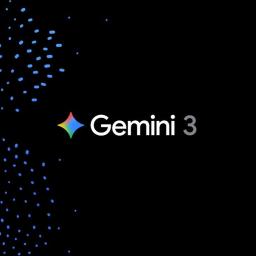 |
by Igor Bonifacic on (#71J84)
A few weeks short of Gemini 2's first birthday, Google has announced Gemini 3 Pro. Naturally, the company claims the new system is its most intelligent AI model yet, offering state-of-the-art reasoning, class-leading vibe coding performance and more. The good news is you can put those claims to the test today, with Google making Gemini 3 Pro available across many of its products and services.Google is highlighting a couple of benchmarks to tout Gemini 3 Pro's performance. In Humanity's Last Exam, widely considered one of the toughest tests AI labs can put their systems through, the model delivered a new top accuracy score of 37.5 percent, beating the previous leader, Grok 4, by an impressive 12.1 percentage points. Notably, it achieved its score without turning to tools like web search. On LMArena, meanwhile, Gemini 3 Pro is now on top of the site's leaderboards with a score of 1,501 points.Okay, but what about the practical benefits of Gemini 3 Pro? In the Gemini app, the new model will translate to answers that are more concise and better formatted. It also enables a new feature Google calls Gemini Agent. The tool builds on Project Mariner, the web-surfing Chrome AI the company debuted at the end of last year. It allows users to ask Gemini to complete tasks for them. For example, say you want help managing your email inbox. In the past, Gemini would have offered some general tips. Now, it can do that work for you.To try Gemini 3 Pro inside of the Gemini app, select "Thinking" from the model picker. The new model is available to everyone, though AI Plus, Pro and Ultra subscribers can use it more often before hitting their rate limit. To make the most of Gemini Agent, you'll need to grant the tool access to your Google apps.In Search, meanwhile, Gemini 3 Pro will debut inside of AI Mode, with availability of the new model first rolling out to AI Pro and Ultra subscribers. Google will also bring the model to AI Overviews, where it will be used to answer the most difficult questions people ask of its search engine. In the coming weeks, Google plans to roll out a new routing algorithm for both AI Mode and AI Overviews that will know when to put questions through Gemini 3 Pro. In the meantime, subscribers can try the new model inside of AI Mode by selecting "Thinking" from the dropdown menu.GoogleIn practice, Google says Gemini 3 Pro will result in AI Mode finding more credible and relevant content related to your questions. This is thanks to how the new model augments the fan-out technique that powers AI Mode. The tool will perform even more searches than before and with its new intelligence, Google suggests it may even uncover content previous models may have missed. At the same time, Gemini 3's better multi-modal understanding will translate to AI Mode generating more dynamic and interactive interfaces to answer your questions. For example, if you're researching mortgage loans, the tool can create a loan calculator directly inside of its response.For developers and its enterprise customers, Google is bringing Gemini 3 to all the usual places one can find its models, including inside of the Gemini API, AI Studio and Vertex AI. The company is also releasing a new agentic coding app called Antigravity. It can autonomously program while creating tasks for itself and providing progress reports. Alongside Gemini 3 Pro, Google is introducing Gemini 3 Deep Think. The enhanced reasoning mode will be available to safety testers before it rolls out to AI Ultra subscribers.This article originally appeared on Engadget at https://www.engadget.com/ai/googles-new-gemini-3-model-arrives-in-ai-mode-and-the-gemini-app-160054273.html?src=rss
|
 |
on (#71J85)
While there are countless ways to play old video games, endless emulators that eat up ROMs and spew out memories, the hardware offerings from Analogue have elevated the act of retro gaming to an art form. With an obsessive dedication to pixel-perfect reproductions of classic platforms, Analogue's various devices generally set the benchmark for consuming old games on new displays.The company's latest entry is an ode to the Nintendo 64, and that poses a bit of a problem. While Analogue's other systems honored the golden age of 2D gaming, the pinnacle of pixel art in many ways, the N64 ushered gamers into the early, ugly days of 3D gaming. Nearly three decades after its initial release, most N64 games look pretty catastrophic by modern standards. Can the Analogue 3D ($250) treatment save them?Origin StoryThe early to mid-'90s were a heady time for console gaming. Sega and Nintendo had printed so much money in the 16-bit era that both were throwing everything they could at the wall to capture the fluorescent pink, velcro wallets of the gamers of the day. Wild controllers, endless system add-ons and even virtual reality were in the cards.But it would be the humble CD-ROM that really pushed things forward. Sega did its own multimedia add-on in-house, with the Sega CD. Nintendo decided to team up with Sony for the development of its own disc drive. When that project fell apart, Sony famously decided to continue on, releasing the original PlayStation in 1995.Almost overnight, the gaming world was all about three-dimensional gaming, a landscape that Sega's Saturn was ill-prepared for. Nintendo, though, went all-in for its next system, the Nintendo 64. It not only packed more polygons and colors than Sony's system, but Nintendo finally cracked the code of how to make a truly good three-dimensional platformer with Mario 64.Mario 64 is not only a great game, it became the template for how player and camera controls worked, defining rules that still exist today.The N64 was also the first mainstream console to feature an analog controller out of the box, the first console since the Atari 5200 in the early '80s to have four controller ports and the first American console to offer haptic feedback in the form of 1997's Rumble Pak. Today it all sounds quaint, but it was a truly revolutionary machine back in the day.N64 redux The Analogue 3D has the look of a N64 console, right down to the four controller ports up front. Tim Stevens for Engadget The Analogue 3D is somewhat revolutionary as well, but for different reasons. At its core, it relies on a field programmable gate array, or FPGA, much like Analogue's previous devices (the Super Nt, Mega Sg, Pocket and Duo). An FPGA is effectively a processor full of virtual building blocks, called logic elements, which enable it to replicate any other system. It takes a massive amount of configuration, but the result is pure hardware emulation.Again, it's the same concept as Analogue's previous devices, just on a massively larger scale. Where the Pocket used an Altera Cyclone V FPGA with 49,000 logic elements, this one uses an Intel Cyclone 10 GX FPGA clocking in at 220,000 logic elements. While Analogue never gave much in the way of explanation, it's likely that the extreme complexity that resulted in delay after annoying delay - well, that and the complexities of running an international business in the tariff-laden minefield that is today's global trading landscape.Beyond that, the Analogue 3D very much follows the same aesthetic seen in the company's previous units: a minimalist take on the original hardware. It looks like a smaller and thinner N64 - one that requires active cooling, by the way, so make sure you don't crowd this thing in among your other, lesser game consoles.It (virtually) supports all the N64's key accessories, like the Transfer Pak, the Expansion Pak and the Rumble Pak. It's USB-C powered and output comes via HDMI, and you'll find the requisite cables included in the box. There's also an SD card around the back for firmware updates and a pair of USB-A ports for good measure. Up front, you'll find four controller ports, with the distinctive circular style used by the N64. But you can connect controllers via USB or wirelessly too, if you prefer. Analogue opted for a another 8BitDo controller. Tim Stevens for Engadget The system's default controller is again provided by 8BitDo, which has created special designs for Analogue's other recent releases. For better or worse, the $39.99 8BitDo 64 controller doesn't imitate the three-pronged N64 style, but does offer all that system's buttons in a more traditional layout. It's perhaps too traditional, difficult to tell apart from Nintendo's own Switch Pro controller from a distance.I haven't been a fan of 8BitDo controllers in the past. Given the premium Analogue charges for its systems, the 8BitDo controllers haven't risen to that level of polish. This new generation, though, is definitely a step up. The controller's buttons don't rattle when you shake it, the inputs have a good feel to them, the vibration isn't harsh and pairing is quick and easy.That said, I did run into latency issues if I was more than about 10 feet away from the system, or if I closed the door on the cabinet that held the Analogue 3D. That's a far cry from the connectivity of a Switch Pro controller, which I can readily use from another room if I'm ever so inclined.CRT vibes in an OLED era The Analogue 3D and the Nintendo 64. Tim Stevens for Engadget Analogue has made a name for itself by obsessing over striking the perfect blend of honoring original systems while making them great in a modern world. If I may insert one automotive reference, they are doing to game systems what Singer Vehicle Design does to Porsches.But where cars both old and reimagined look great on the same road, vintage consoles struggle with modern TVs. Plug an original N64 into your 4K HDTV via a tangle of adapters, and you'll get a blurry, blocky mess that will make you question everything your childhood self held dear. Even if you go the hardcore route with something like an Open Source Scan Converter or an HDMI mod kit to take vintage analog signals and turn them into modern digital ones, you're still probably not going to like the results. That's because it isn't all about getting crisp signals from console to display. These systems were designed for cathode rays, where one colored pixel bled into the next to create a seamless view to hide many of the N64's 320 x 240 flaws.The Analogue 3D goes to great lengths to replicate that look through a series of filters meant to replicate everything from a consumer-grade CRT to the sort of professional-grade monitor that cost as much as a new car did back in the '90s. Analogue has experimented with these filters in the past, but they're taken to a new level here, with options for specifying monitor type, quality and size. The results are quite impressive, still a bit grittier than a giant-sized CRT would be in real life, but looking miles better than the unfiltered view of the games. You can even tune and tweak those display settings on a per-game basis, if you're especially finicky.Unfortunately, you'll have to take my word for that. The 4K CRT effects don't really show up through a capture card, and as of now the Analogue 3D has no integrated screen capture functionality. That, I was told, is coming later.Back to the future of gaming Perfect Dark on the Analogue 3D. Tim Stevens for Engadget I started my testing with the game that, in the eyes of many, represents the high-water mark of the N64 experience: Perfect Dark. Rare's classic first-person shooter shares a lot of its concepts (and surely its code) with that other N64 icon, Goldeneye. But, in the three years between those games, developers learned plenty of tricks, resulting in a game that really pushed the hardware to its limits.Or past its limits, really. Perfect Dark was equally famous for its uneven frame rates. Expecting a one-to-one recreation of the original hardware, I was surprised to find the game running buttery smooth on the Analogue 3D. How?The system includes a series of tweaking and tuning options, including something of a baked-in overclocking function. By default, it's on Auto, which, at least in the case of Perfect Dark, dialed up the Analogue 3D's power to make up for the original system's polygon processing shortcomings. But the Analogue 3D is nothing if not tweakable, and with a few taps into the system's menu, I was able to turn that off.Now locked into "Force Original Hardware" mode, Perfect Dark played just like it did back in the day, a shaky and jittery testament to the overachieving aspirations of Rare's developers. And, thanks to more settings adjustments, I could enable the 16:9 mode in Perfect Dark and stretch the video output on the Analogue 3D, getting a proper widescreen effect - even though the game doesn't output a full 16:9 grid of pixels. Super Robot Spirits on the Analogue 3D. Tim Stevens for Engadget Beyond Auto, you can set the game to run in Enhanced, Enhanced+ and Unleashed speeds. I switched over to another game notorious for its poor performance: Superman: The New Superman Adventures. I initially reviewed this game way back in 1999, and it has since become notorious as one of the worst of all time.It's no better today, but thanks to the Analogue 3D, it is at least more fluid. The game's choppiness is gone, replaced by a too-rapid pace to the uninspired ring-chasing gameplay. Sadly, the faster frame rate doesn't make up for the omnipresent green fog that makes Superman 64 feel so claustrophobic. Neither does it fix the crunchy, murky textures that surround you in Perfect Dark.It's not all bad, though. 1997's Super Robot Spirits, a giant robot fighting game released only in Japan, features untextured 3D models that use Gouraud shading to look a little less blocky. The result looks genuinely crisp and clean on the Analogue 3D.So too do games like Mario Kart 64 and Yoshi's Story, 3D games that rely heavily on 2D elements, which scale very nicely up to a modern, 65-inch 4K OLED, like the LG B7 I used for testing.Unfortunately, there were few games that really popped for me. Much of the time, I was stuck looking at blurry, blocky textures poking out of foggy landscapes that were far less breathtaking than I remembered them 25-plus years ago.Wrap-up The Analogue 3D and the Nintendo 64. Tim Stevens for Engadget Analogue's earlier systems take some of the greatest 2D games ever made and elevate them to crisply defined, high-resolution pixel art. They are gorgeous and charming to behold, which just makes them all the more engaging to play. Sadly, few of the games on the N64 stand up so well. Making these games look truly good would require pushing back the omnipresent fog and upscaling the ugly textures that plague many N64 games. That, it's safe to say, would go well past the point of faithful recreation that Analogue strives for.It's hard to fault the Analogue 3D itself for this. The hardware does a remarkable job of recreating that original experience. My N64 library has never looked better, and I am definitely enjoying digging into games I haven't played in decades, plus a few newly acquired gems that I missed back in the day. But, more often than not, I'm left shaking my head at just how bad these games looked, and no amount of 4K upscaling and CRT emulation can fix that.This article originally appeared on Engadget at https://www.engadget.com/gaming/analogue-3d-review-modern-processing-cant-fix-vintage-flaws-160000410.html?src=rss
|